MARKET
Most pharma manufacturers/brands and associations downplay actual counterfeiting data: ASPAand Crisil Report

RESEARCH
Advancement of immuno-oncologyin India


FEBRUARY2023,` 40

VOL.18 NO.3 PAGES 68 www.expresspharma.in















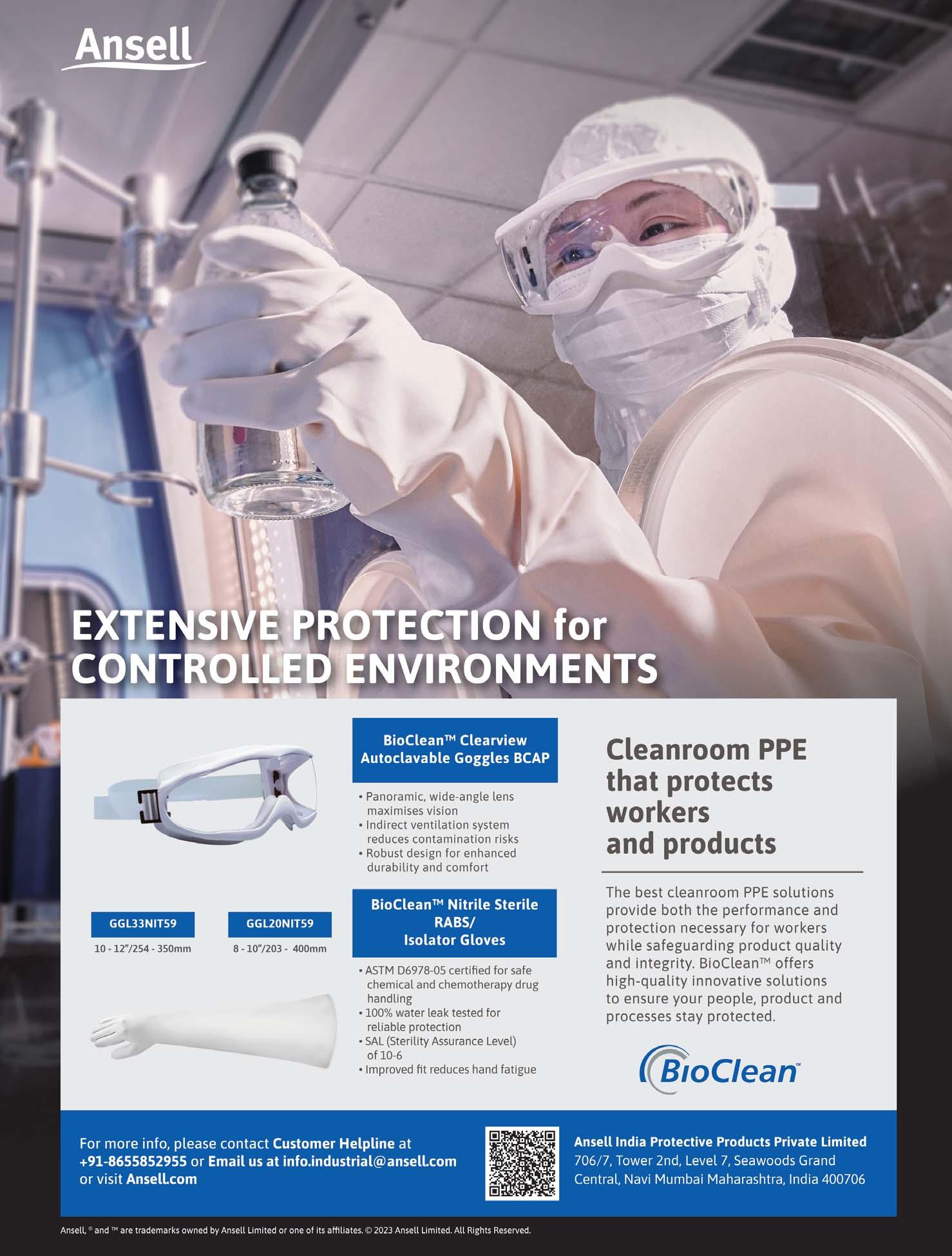

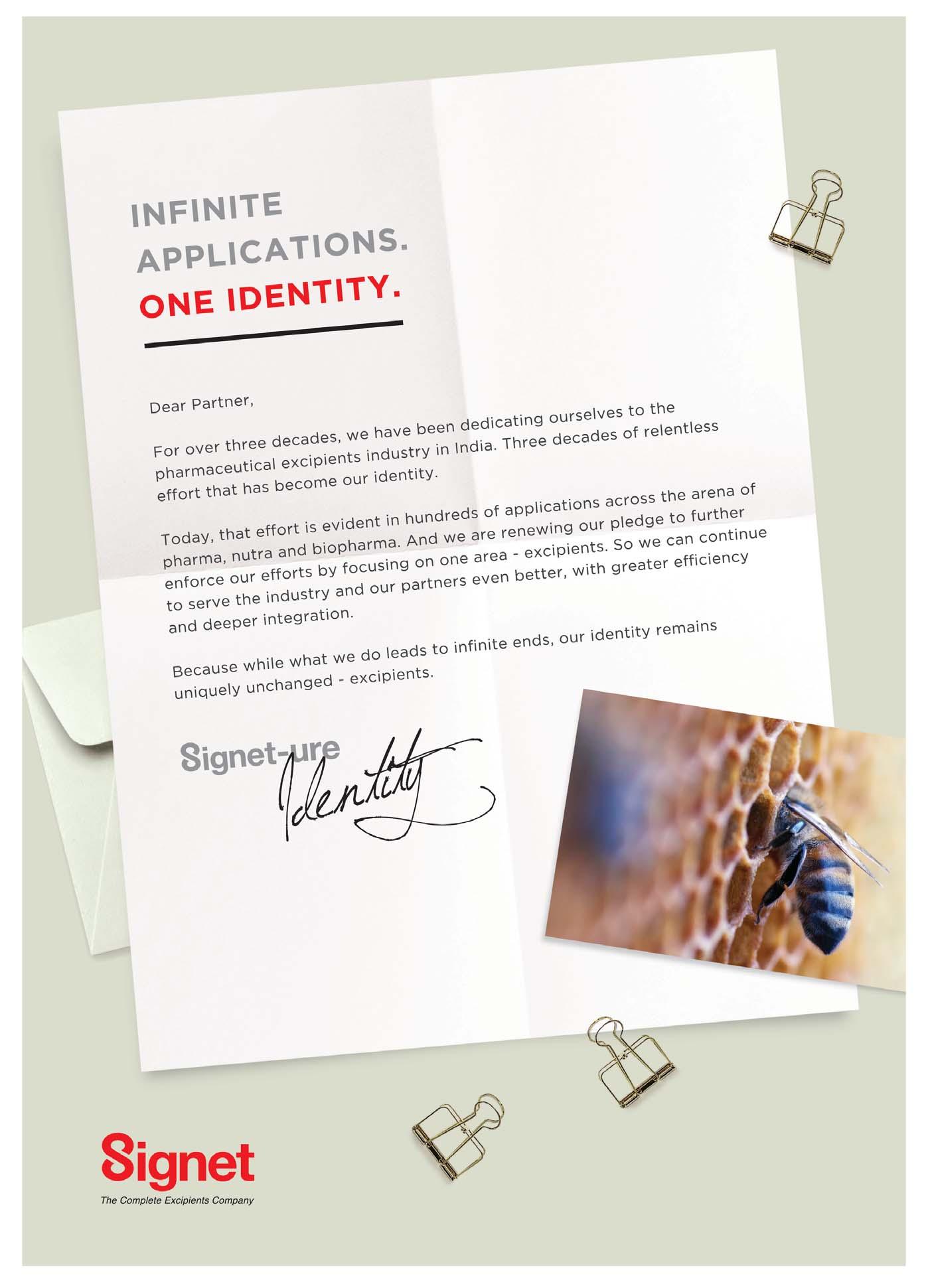
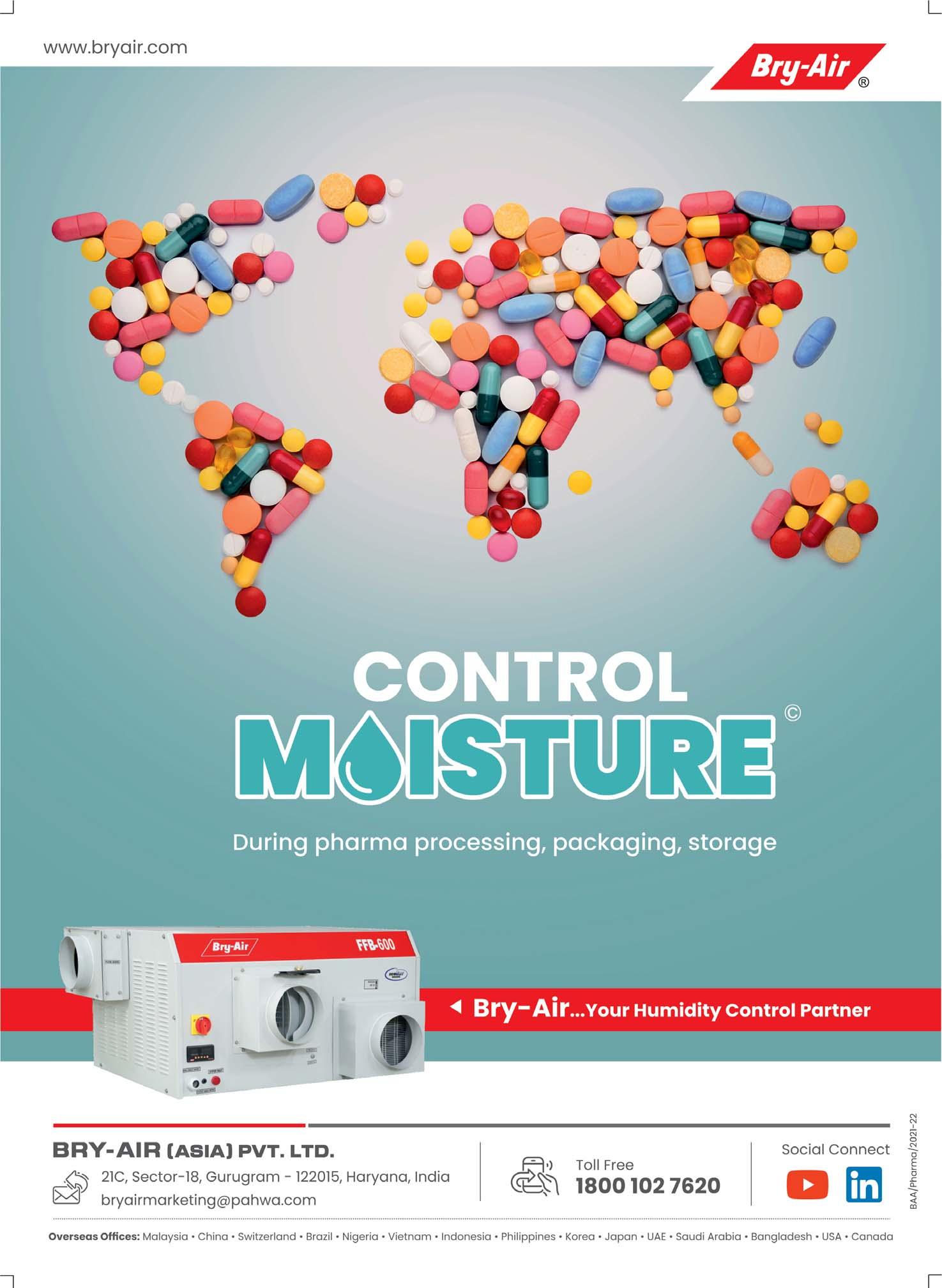
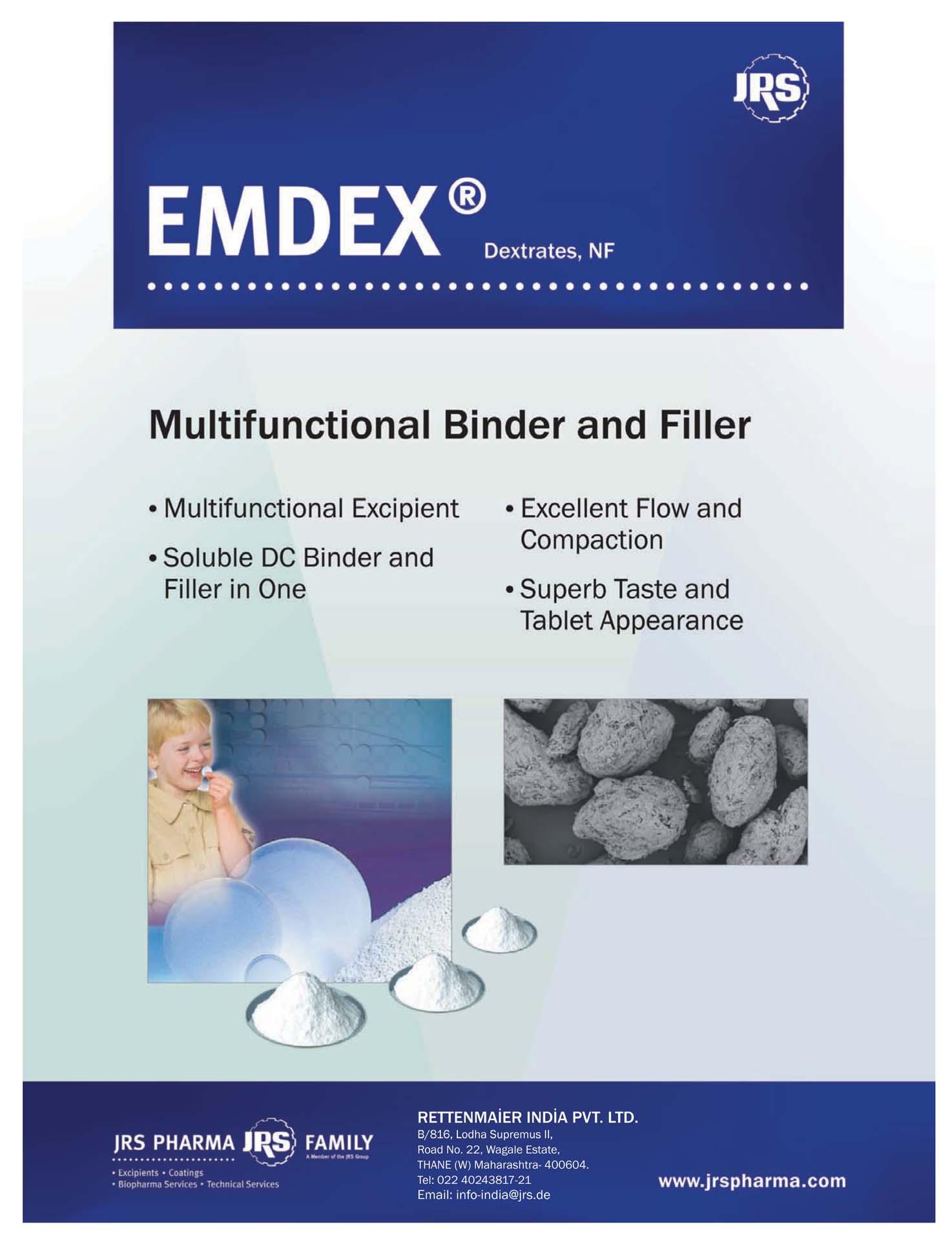
CONTENTS
Chairman of the Board
ViveckGoenka
Sr.Vice President-BPD
Neil Viegas
Asst.Vice President-BPD
Harit Mohanty
Editor Viveka Roychowdhury*

BUREAUS
Mumbai
Lakshmipriya Nair,Kalyani Sharma
Delhi
Akanki Sharma
DESIGN
Art Director
Pravin Temble
Senior Designer




Rekha Bisht
Senior Artist
Rakesh Sharma
Digital Team
Viraj Mehta (Head of Internet)
Marketing Team
Rajesh Bhatkal
Ambuj Kumar
Ashish Rampure
Debnarayan Dutta
Production Co-ordinator
DhananjayNidre
Scheduling & Coordination
Pushkar Waralikar
CIRCULATION
Mohan Varadkar
MARKET RESEARCH
The Sikkim Pharma Summit brought stalwarts,experts and gamechangers of the state’s pharma sector together to deliberate upon the opportunities and challenges in the state,discuss strategies to optimise growth potential,and share learnings from the COVID-19 pandemic to enable sustained progress in a rapidly changing global milieu | P22

TECHNOLOGY
13
MOSTPHARMA MANUFACTURERS/BRANDS AND ASSOCIATIONS DOWNPLAY ACTUAL COUNTERFEITING DATA: ASPAAND CRISILREPORT
P18:INTERVIEW
Dr Sanjay Kumar Jain President - India Operations,Amneal Pharmaceuticals


20 ADVANCEMENT OFIMMUNOONCOLOGYIN INDIA

P31:INTERVIEW
Dr Rajeev Singh Raghuvanshi Secretary-cum-Scientific Director,IPC
Mumbai-400710 and Published at Mafatlal Centre,7th floor,Ramnath Goenka Marg,Nariman Point,Mumbai 400021.
Editor: Viveka Roychowdhury.* (Editorial & Administrative Offices: Mafatlal Centre,7th floor,Ramnath Goenka Marg,Nariman Point,Mumbai 400021)
* Responsible for selection of news under the PRB Act.Copyright © 2017.The Indian Express (P) Ltd.All rights reserved throughout the world. Reproduction in anymanner,electronic or otherwise,in whole or in part,without prior written permission is prohibited.

February2023 EXPRESS PHARMA 9 Express Pharma® Regd.With RNI No.MAHENG/2005/21398.Postal Regd.No.MCS/164/2022 - 24.Printed and Published byVaidehi Thakar on behalf of The Indian Express (P) Limited and Printed at The Indian Express Press,Plot No.EL-208,TTC Industrial Area,Mahape,Navi
Fix quality issues, the rest will fall in place
In the run up to the unveiling of the Union Budget 2023, the pharma sector is once again brushing up its laundry list of expectations. As this is Finance Minister Nirmala Seetharaman's last full 'parting shot' budget before the general elections next year, the lifesciences industry is hoping that many of their long-standing demands get addressed. To get a sense of the Budget 2023-24 expectations, do browse through a selection of them at this link (https://www.expresspharma.in/budget-2023-whatindustries-look-forward-to/)
However, beyond the budget, with nine state and one Union Territory (UT) legislative assemblies headed for elections in 2023, leading up to the all important Lok Sabha elections in May 2024, it is clear that we are headed for a very noisy year. All this in the midst of COVID ripples and a global stagflation, if not a full-blown recession, hovering over the horizon. Amidst headlines of layoffs across sectors, led by tech companies, words of caution came from the PwC’s Annual Global CEO Survey, which reportedly had 78 per cent of Indian CEO respondents, versus 73 per cent of global CEOs believe that global economic growth will decline over the next year.
Countries are, therefore, vying for global investors as well as big domestic names to increase investments in sectors that are job creators as well as add to the nation's coffers in time. And, the competition for global capital filters down to each state, with chief ministers laying out the red carpet at their global investor summits and announcing new initiatives at every industry meet.Thus, at the recently concluded 72nd Indian Pharmaceutical Congress (IPC) in Nagpur, Devendra Fadnavis, Deputy Chief Minister, Maharashtra, announced that Nagpur would have a bulk drug park at the the city's MIHAN (Multi-modal International Cargo Hub and Airport.)
This announcement takes the number of proposed and approved bulk drugs parks to four, with the Department of Pharmaceuticals' (DoP) prior approval for proposals from Andhra Pradesh, Gujarat and Himachal Pradesh. However, while the intent is good, implementation should be strong and speedy. There have been calls for 'light but tight' regulations. How many years will it take for these plans for bulk drug parks to mature?
While industry honchos will always ask for more sops, the Finance Minister also has the choice to allocate budgetary resources to new initiatives. The clamour for a Research Linked Incentive (RLI)
scheme has mounted, in addition to doubling the tax deductions on R&D spends. The rationale is that a Production Linked Incentive (PLI) programme without a strong research core will miss real future value add. However, most pharma companies are cutting back on research spends, discouraged by the slow pace and lack of results. Some comfort comes with the recent Q3FY23 results of pharma companies in India, with domestic formulations remaining a bright spot, with double-digit year or year growth potential, despite low-to-nil COVIDrelated revenues this quarter. However, the United States (US) revenues continue to disappoint, with flat growth.
But more importantly, quality concerns continue to dog the sector. Be it data integrity-related 483s from the US Food and Drug Administration (USFDA), Nepal's drug regulator alleging noncompliance to WHO norms or WHO alerts on cough syrups with deadly ingredients. Non-resolution of such regulatory raps, as well as volatile prices of inputs and increasing price control remain the key risk factors for India's pharma sector.
Let us hope that the new infrastructure being built is future-ready, with investments in greener technologies/techniques/ingredients. While pharma honchos have no control over prices of raw materials (except to put in place more resilient procurement practices) and price caps (besides sending representations to policy makers), they can definitely influence stricter enforcement of compliance to GMP norms, data integrity practices, etc. at all their premises. Training of employees to comply with evolving global guidelines should be the overall goal for 2023.
Can policy makers link budgetary allocations to better quality compliance, with stricter oversight? This would serve multiple purposes. Firstly, patients would be assured of safer medicines at affordable costs, with minimal environmental impact. And, secondly, higher quality standards at affordable prices would serve as a formidable competitive advantage and set the bar higher for any future contenders for India's 'pharmacy to the world' title. Can we see policy makers and industry leaders double down to this task in 2023?
VIVEKA ROYCHOWDHURY, Editor viveka.r@expressindia.com viveka.roy3@gmail.com

EXPRESS PHARMA February2023 10 EDITOR’S NOTE
Can policymakers link budgetary allocations to better quality compliance, with stricter oversight?


Most pharma manufacturers/brands and associations downplayactual counterfeiting data: ASPAand Crisil Report


The Authentication Solution Providers' Association (ASPA) and Credit Rating Information Services of India Limited (CRISIL) have released a new report titled, 'The state of counterfeiting in India 2022.' It reveals how counterfeiting activities are impacting the sustainable growth of the major industries in India, including pharmaceuticals, FMCG, automotives, apparel, consumer durables/electronics, and agri products, and informs that counterfeiting costs the Indian economy Rs 1 trillion every year, i.e., approx. 0.5 per cent of its Gross Domestic Product (GDP).
The report is based on an independent survey conducted with consumers and retailers covering 12 Indian cities (Delhi, Agra, Jalandhar, Mumbai, Ahmedabad, Jaipur, Indore, Kolkata, Patna, Chennai, Bengaluru and Hyderabad) to gauge their perception of counterfeiting in several key sectors.
An important finding of the survey was that consumer perception pegged the extent
ofcounterfeiting at 25-30 per cent of the market, higher than the general industry expectations. Counterfeiting is the most prevalent in FMCG, apparel, and agro-chemical sectors(~30 per cent), followed by the pharmaceutical, automotive, and consumer durables sectors(20-25 per cent).The survey also reveals thatalmost 89 per cent of consumers acknowledge the presence of fake products in the marketand are often compelled to buy counterfeits for reasons such as sensitivity to price, demand-supply gap, desire to buy luxury brands, peer pressure and social motivations.
Apparel (31 per cent), FMCG (28 per cent), and automotives (25 per cent) are the top segments where consumers came across a counterfeitproduct, followed by pharmaceuticals (20 per cent), consumer durables (17 per cent) and agrochemicals (16 per cent). Even after discovering that the product is fake, consumers take close to negligible action about reporting it.
The top 10 states – Uttar
February2023 EXPRESS PHARMA 13 MARKET
Arecent report released by ASPAand CRISILunearths the realities of the issue of counterfeiting in India,and showcases how much it impacts the stakeholders in the economic value chain. Excerpts from the report to understand the extent and impact of counterfeiting on pharma....
MARKET
Pradesh, Bihar, Rajasthan, Madhya Pradesh (MP), Jharkhand, Haryana, Punjab, West Bengal, Maharashtra and Odisha – need urgent attention with respect to counterfeiting incidents and a more detailed analysis of the issue followed by stringent anticounterfeiting policy mechanisms and implementation.
Sharing the insight on the report, Nakul Pasricha, President ASPA, said, “Illicit goods trade stood at Rs 2.6 trillion in FY 2019-20 in India affecting almost all sectors. It is on the rise and heavily bleeding the country, industry and consumers by large. An aware consumer holds the power to fight this menace; however, we must enhance consumer awareness about this issue. Consumers play the most crucial role in fighting against fakes. When many consumers are unaware of the actual threat from counterfeits, the country will never be able to harness the strength of active consumer participation in curbing the sale of fake products in the market.”
Suresh Krishnamurthy, Senior Director, CRISIL Market Intelligence and Analytics, said, “Counterfeiting is not limited to high-end luxury items. Even common items, from cumin seeds to cooking oil and from baby care items to medicines, are increasingly reported as counterfeit. An important finding of the survey was that consumer perception pegged the extent of counterfeiting at 25-30 per cent of the market, higher than the general industry expectation.”
Industryoverview
The Indian pharma industry is the world's third largest by volume and 14th largest by value. According to CRISIL Research, the Rs 3,136 billion pharma market (fiscal 2021 estimate) is projected to reach Rs 3,607 billion in fiscal 2023.
Even though India is one of the largest manufacturers of generic medicines across the globe, the penetration of organised pharma chains within the country is limited owing to lower reach of healthcare
services, a poor supply chain network and high costs.
The demand-supply gap and low affordability ultimately lead to counterfeit/grey market of medicines, especially for lifestyle diseases.
Distributors and consumers have higher estimate of counterfeit products in pharma
than retailers/manufacturers
The supply of counterfeit products is p reval ent across the country, but more so in tier II/III cities and villages. As per industry experts and a consumer survey, the level of counterfeiting is on the higher side in spite of low figures reported by the survey conducted by the regulatory authority Central Drugs Standard Control Organization (CDSCO) and the Government of India. According
to the industry people, about 0.1 to three per cent of medicines manufactured and sold are counterfeit. As per distributors and authentication solution providers, it is perceived to be 10-20 per cent of the overall pharma market in India.
Consumer perception of the extent of counterfeiting in the pharma market is higher at 20 per cent, as per a consumer survey conducted across 12 key cities.

As per the report on Countrywide Survey for Spurious Drugs published by CDSCO in 2018 on behalf of the Directorate General of Health Services (DGHS), the Ministry of Health and Family Welfare, the extent of spurious drug in retail pharmacy is much below the projections made by various media, WHO, SEARO and other studies i.e. only 0.046 per cent (11 samples out of
24,136 samples). The report mentions according to State Drug Controller, the extent of circulation of spurious drug is about 0.3 per cent, which is way lower than the World Health Organization (WHO) figure of ~10 per cent sub-standard and falsified medical products in developing countries. As per industry experts, the WHO figure of 10 per cent includes sub-standard, unregistered and falsified products as well.
The situation worsened during the COVID-19 pandemic. There was a massive jump in counterfeit drugs as the pandemic significantly incentivised illicit products as official supply was restricted and the supply chain was disrupted. The WHO has flagged the threat of fake COVID-19 vaccines circulating in the global market, and many have been arrested for administer-
ing falsified vaccines in India.
Unavailability: Key reasons for purchasing counterfeit medicines

Counterfeiting is prevalent in pharma products whose volumes are very high and value is high.
The major reasons of counterfeiting are leakages in the supply chain and demand and supply gaps. According to the consumer survey, about 25 per cent of the total respondents willingly purchased counterfeit/duplicate pharma products owing to unavailability of original brands and lower costs. Pharma products refer to all healthcare products such as medicines, medical devices, OTC drugs, OTC consumables such as bandages, cotton, ear buds, etc.
Counterfeit pharma products easily enter into the supply chain also due to the
EXPRESS PHARMA February2023 14
MARKET
demand-supply gap in the domestic market – especially in non-metro cities. Moreover, out of the total consumers surveyed across different cities; 29 per cent in Indore, 32 per cent in Hyderabad, 23 per cent in Jalandhar and 25 per cent in Chennai came across counterfeit pharma products.
Extent of counterfeiting: Citywise consumers who have come across counterfeit products in the pharma sector
Most of the pharma manufacturers/brands and associations downplay the actual counterfeiting data in the segment. Few years ago, acceptance of counterfeit products was a major issue in the pharma industry. However, brands have started looking at counterfeiting as a problem as end users have become more vocal about the issue on social media and consumer forums. So, brands are more proactively working to check counterfeiting through various measures such as security holograms, Optical Variable Devices (OVDs), security seal labels and tamper-proof packaging.
Some brands are also using digital technologies, including coding and serialisation which cover components such as barcode, data matrix and radio frequency identification (RFID). Further, digital technologies can help track-andtrace products through the supply chain and also remotely authenticate a product by scanning a product label with a smartphone or by entering a code into a web-platform.
Despite these efforts, many consumers are still clueless on how to check the authenticity of a product. According to the consumer survey, about 33 per cent of total consumers who came across counterfeit products in the pharma segment were unaware that the product was counterfeit at the time of purchase. Hence, brands should increase consumer awareness on verifying the authenticity of the products before buying them to curb counterfeiting.
Types of counterfeiting in the pharma industry WHO has defined counterfeit drugs as:
◆ Substandard: Also 'out of specification,' these are authorised medical products that fail to meet either quality standards or specifications,
or both.
◆ Unregistered/unlicensed: Medical products that have not undergone evaluation and/or approval by the national or regional regulatory authority for the market.

◆ Falsified: Medical products that deliberately/fraudulently
misrepresent their identity, composition or source.
Counterfeit
medicines/drugs have sub-standard APIs in manycases
The situation is complicated by counterfeit drugs often
containing sub-standard APIs because the producers are keen to avoid detection as well as generate repeat business.
The drugs may be ineffective and dangerous as well as difficult to spot because they use APIs from a similar class.
February2023 EXPRESS PHARMA 15
MARKET
The modus operandi of counterfeiters includes using sub-standard APIs to manufacture drugs and selling them under the original brand name, recycling used vials with intact labels, refilling and re-labelling with packaging similar to branded drugs, imitation, manufacturing without knowledge, reuse beyond the expiry date, and large-scale counterfeiting. Some examples are neomycin eye drops and meningococcal vaccine made with tap water; paracetamol syrup made with industrial solvent; ampicillin replaced by turmeric; contraceptive pills substituted with wheat flour; and anti-malarials, antibiotics and snake anti-venom containing no active ingredients.
The intensity and number of counterfeit pharma products are alarming.
A more detailed review of the customs data shows that antibiotics, lifestyle drugs and painkillers were the most targetted by counterfeiters, but also included medicaments for various diseases such as malaria, HIV/AIDS and cancer.
Spurious trade goods: According to an OECD 2020 report, trade in counterfeit pharma products, India is the main production/transit location for counterfeit drugs shipped to the European Union (EU). It is the origin of 47 per cent of the total value of counterfeit pharma products seized by the EU customs authorities, followed by China (37 per cent) and Hong Kong (eight per cent). Counterfeit seizures can seriously impact exports. As per 2016 data from OECD/EU Intellectual Property Office (EUIPO), India was origin of 53 per cent of the total seized value of counterfeit pharma products and medicines worldwide.
A recent study by OECD and EUIPO - Trade in Counterfeit Pharmaceutical Products, found that China, India, Philippines, Vietnam, Indonesia and Pakistan are the leading sources of counterfeit medicines distributed globally.
SECTOR-SPECIFIC KEYHIGHLIGHTS: PHARMACEUTICALS
◆ Consumer perception on the extent of counterfeiting: 20 per cent of the market.
◆ The city-wise extent of counterfeiting: Out of the total consumers surveyed across different cities,32 per cent in Hyderabad,29 per cent in Indore,25 per cent in Chennai and 23 per cent in Jalandhar came across counterfeit pharma products.

◆ Reasons: Supplychain inefficiencies and the gap between demand and supply.
◆ Methods adopted bythe industryto checkcounterfeit: Securitylabel,tamper-evident seals,securitytear tape,tagger foil, securityblister foils and serialisation.
WHO lists ways to identifysub-standard or falsified medical products
Some falsified medical products are almost visually identical to genuine products and very difficult to detect.
unsealing of products with transparent film packaging. Holographic tear tape technology provides high security and protects brands from counterfeiting.
Less prevalence of counterfeit medicines in organised pharmacy
As per CRISIL Research survey, the presence of counterfeit products in the organised supply chain network is negligible as all the transactions take place along with invoice and Goods and Services Tax (GST), which has the manufacturing date, expiry date and batch code of the medicine. Organised large distributors directly deal with brands and supply to reliable retail pharmacy shops and also provide ERP solutions to retailers to minimise spurious drugs sales.
However, as per the respondents, counterfeiting still takes place mostly in wholesale markets, tier II/III cities and villages where unbilled products without GST are bought and sold. Fake product manufacturers copy the formula and source the raw material (API) locally or from China to manufacture fake copies of the original medicine, which are usually substandard, then use the same kind of packaging and brand name to sell the product in the market. These drugs are
not as effective as the authentic ones, but they may still work as the formulation is same.
Fake drug manufacturers offer more than 50 per cent margin to wholesale distributors, who further pass on these products in the supply chain, along with original products. End users unknowingly purchase fake products on MRP.
Keymarkets for counterfeit pharma products
In India, Bhagirath Palace, Chandni Chowk, New Delhi is said to be the hub for counterfeit and spurious drugs. Bihar, West Bengal, Uttar Pradesh (UP) and Gujarat are states where cases of fake and spurious drugs were found in the local markets.
Two other infamous places are Govind Mitra Road, Patna, Bihar (for products like capsules, tablets, injections, powders and syrups); and Fountain Market, Mantola, Agra, UP (for medicines and medical devices such as surgical instruments, capsules, tablets, injections, powders and syrups).
WHO too puts down visual examination as the first step by checking the packaging for condition, spelling mistakes or grammatical errors. Then, people should check the manufacturing and expiry date and ensure the details on the outer packaging match the dates printed in inner packaging. The medicine should not look discoloured, degraded or have an unusual smell. And, any adverse symptom or suspicion needs to be discussed with a doctor.
Methods adopted bythe industryto check counterfeiting
The most common method to check counterfeiting by the pharma companies is batch coding, which can be tracked and traced easily for confirming the authenticity of the medicine. Some other measures are:
Tamper evident label: A sealing material for a package or bottle that is typically irreparable once opened, indicating tampering.
Security label: Most brands contain a high security MRP label on their products for easy identification. These labels comply to stringent quality norms and meet the brand's global quality standards.
Serialisation: A unique serial number is assigned to each saleable unit of each prescription product that is linked to information about the product's origin, batch number and expiration date.
Security tear tape: The tear tape is also called tear strip and mainly used for opening and
Tagger foil: Holographic tagger foils come with a hologram of the client's company engraved on it. Using foils helps in portraying products as hygienic, as they have an extra layer of shield from the internal side of the packaging.
Security blister foils: High security blister foil packaging for pharma manufacturers prevents tampering or counterfeiting, maintaining the uniqueness, originality and authenticity of the products.
GlaxoSmithKline (GSK)
Consumer Healthcare has each tablet of crocin embossed with ‘`CROCIN' lettering as an anticounterfeiting measure.
Pfizer India has a dedicated investigative wing, which gathers discrete information. It has a close association with its subcontractors, distributors and retailers to get information on counterfeiting from the market. It also follows enforcement action through exchange of information with police officials.
Roche has engaged supply chain security to provide encryption software that enables consumers to verify that their medicine is genuine.
Several companies also use holographic images on medicine foil to prevent counterfeiting of high demand high value drugs. Suspicious medical products should be reported to the National Medicines Regulatory Authority – CDSCO –and not just reported to the shopkeeper or owner or manufacturer.
Laws to protect against counterfeiting
The Drugs and Cosmetics Act
1940: This Act regulates the import, manufacture and dis-
EXPRESS PHARMA February2023 16
MARKET
tribution of drugs in India. Its primary objective is to ensure that drugs and cosmetics sold in India are safe and effective, and conform to state quality standards. The related Drugs and Cosmetics Rules, 1945 contain provisions for classification of drugs under given schedules, and there are guidelines for the storage, sale, display and prescription of each schedule.
Drugs (Amendment) Rules, 2022: According to the notification, the new rule, named Drugs (Amendment) Rules, 2022, inserts a sub-rule (5) after the existing sub-rule (4) under Rule 96 of the Drugs Rules, 1945, related to the manner of labelling. The new sub-rule says, “Every active pharmaceutical ingredient (bulk drug) manufactured or imported in India shall bear quick response code on its label at each level packaging that store data or information readable with software application to facilitate tracking and tracing.”
The stored data or information shall include the minimum particulars including unique product identification code, name of the API, brand name (if any), name and address of the manufacturer, batch number, batch size, date of manufacturing, date of expiry or retesting, serial shipping container code, manufacturing licence number or import licence number and special storage conditions required (if any).
The authorities have been considering options to implement technology to track and trace the drugs and raw materials in the past few years. The Drugs Technical Advisory Board (DTAB) has recommended introduction of barcode or QR code in the top 300 brands of drug products available in the Indian market to help track and trace these brands.
Instance of counterfeit pharmaaeizure in India
ASPA reported a total of 134 incidents of pharma counterfeiting in 2021 and 94 in 2020. COVID-19 pandemic led to an increase in counterfeiting incidents in the market, especially around products such as PPE kits, masks, medicines for

treatment of cough, cold and other COVID symptoms, cases of spurious vaccinations, etc. UP accounted for the highest share in counterfeiting instances for pharma segment, followed by Bihar, MP and Haryana.
Conclusion
Parischa mentions, “The country requires a comprehensive, proactive, and holistic counter approach. We need to make a significant change in increasing awareness, implementing authentication solutions, sup-
porting these with robust track-and-trace infrastructure, and securing the supply chain against criminals. Since its inception, ASPA has made good progress in creating momentum in the fight against fakes in India, and we are committed to
strengthening this momentum. We look forward to working with government departments, industry bodies, and institutions to develop more avenues to make India’s fight against counterfeiting more powerful.”
February2023 EXPRESS PHARMA 17
RESEARCH
The (pharma) sector is learning to create capabilities in innovative R&D rapidly
Dr Sanjay Kumar Jain ,President - India Operations,Amneal Pharmaceuticals speaks about the emerging trends in pharma R&D,tecnologies driving these and transformations, opportunities for India's pharma sector and more,in an interaction with Lakshmipriya Nair

How is pharma R&D in India transforming? What are the imperatives that led to this change?
The Indian pharma industry has emerged as a key provider of generic medications to both developing and developed countries. The transformation of India's pharma business along the R&D value chain indicates a significant change from medication importer to drug inventor. The Indian government's industrial and technological policies as well as improvements in intellectual property regulation were critical in this expansion of R&D competence. The industry has followed a trajectory from duplicative imitation to creative imitation to rise along the value chain of pharma R&D. Finally, as patent law evolves, the sector is learning to create capabilities in innovative R&D rapidly.
On the other hand, R&D in India for export-oriented items is gradually catching up with other global corporations.
In addition to the numerous characteristics listed above, severe regulatory requirements for submission of product dossiers for approval by respective agencies such as the US FDA/ EMA/ANVISA have also played a significant role. We have good talent in India, and a majority of Indian companies serving these regulated markets have adequate infrastructure to do research and development, particularly for the formulation of medicinal goods.
From an evolutionary point of view, how has COVID-19
Amneal makes significant investments in high-quality facilities,equipment,technology, and expertise.Afew of our more complex capabilities include long-acting depot technology for injectable products and microsphere/multi-particulatebased development and scale-up
impacted the pharma R&D sector?
The pandemic has had a huge impact on India's R&D across industries, especially with the pharma sector striving to be strong in this area of critical
reduce their operations and divert their resources towards addressing the immediate needs caused by the outbreak. R&D leaders also saw productivity falling due to working from a distance. However, the industry demonstrated remarkable resilience in creating solutions to keep operations running during times of uncertainty. There were pharma players who were already performing good research for vaccination, and they cracked the formulation for COVID-19 vaccines in a relatively short time. This rapid development, subsequent clinical testing, and approval by the Indian drug authority demonstrated our capability and intellect.
Can you share some key learnings from your vast expertise to improve the current R&D scenario in India and help advance potential treatments?
need the right infrastructure, investment planning, dedicated research centres, collaboration between universities and industry, and the patience to get success, since NCE development may take 10-15 years.
How is technology ushering new paradigms in pharma R&D? Tell us about the pivotal technologies empowering and enabling pharma companies to improve and accelerate their R&D outcomes. How is Amneal utilising technology to accelerate and enhance the life sciences R&D pipeline?
As per the GlobalData survey in 2022, 70 per cent of the industry respondents anticipate ‘drug development’ to be the most impacted area by implementation of smart technologies.
need despite several issues impeding its growth. For instance, lockdowns and other restrictions enforced to prevent the spread of the virus forced many R&D facilities and labs to stop or significantly
The Indian pharma industry has come a long way in R&D development, innovation and government policies to encourage new products in the market. However, to compete with the global market and sustain its title as the “Pharmacy of the world” postpandemic, the sector must create an inclusive environment for industry leaders and scholars to discuss the current situation and create a path for R&D advancement in the pharma sector.
One such aspect that will fuel this growth is new chemical entities (NCEs). I believe that we have talent in India to crack NCEs, but we
Because of the challenges and disruptions caused by the coronavirus pandemic, pharma businesses are increasingly adopting cuttingedge technologies such as AI, AR/VR, Big Data, and Quantum Computing to produce personalised solutions, speed up R&D efforts, and alter the user experience.
Most importantly, regulatory agencies are also keeping pace with the speed of industry. Clear guidelines and direction have helped to get faster approvals. For example, Modelling and Simulation for prediction in Bio Study, Stability prediction using software, Design of Experiments, and Quality Target Product Profile (QTPP)
EXPRESS PHARMA February2023 18
INTERVIEW
based development have expedited the overall development work.
Amneal makes significant investments in high-quality facilities, equipment, technology, and expertise. A few of our more complex
an ageing population, rising affluence, and more access to healthcare. In India, the government's emphasis on expanding access to healthcare and the local market is also contributing to the growth of the pharma
business. Furthermore, India's enormous pool of skilled personnel and relatively inexpensive labour costs make it an appealing investment. Our mission at Amneal is to make 'healthy' possible through increased access to
the latest innovations in essential medicines, and we aim to leverage the country’s growing offerings in the sector by placing a specific emphasis on innovating products that address the market’s unmet needs. The company is also
leveraging these opportunities by developing complex generics, different dosages by repurposing the existing molecules, and working to develop new molecules.
lakshmipriya.nair@expressindia.com
capabilities include longacting depot technology for injectable products and microsphere/multiparticulate-based development and scale-up. The company uses the latest technology in both lab and commercial sizes, and is constantly refining its procedures across its production activities.
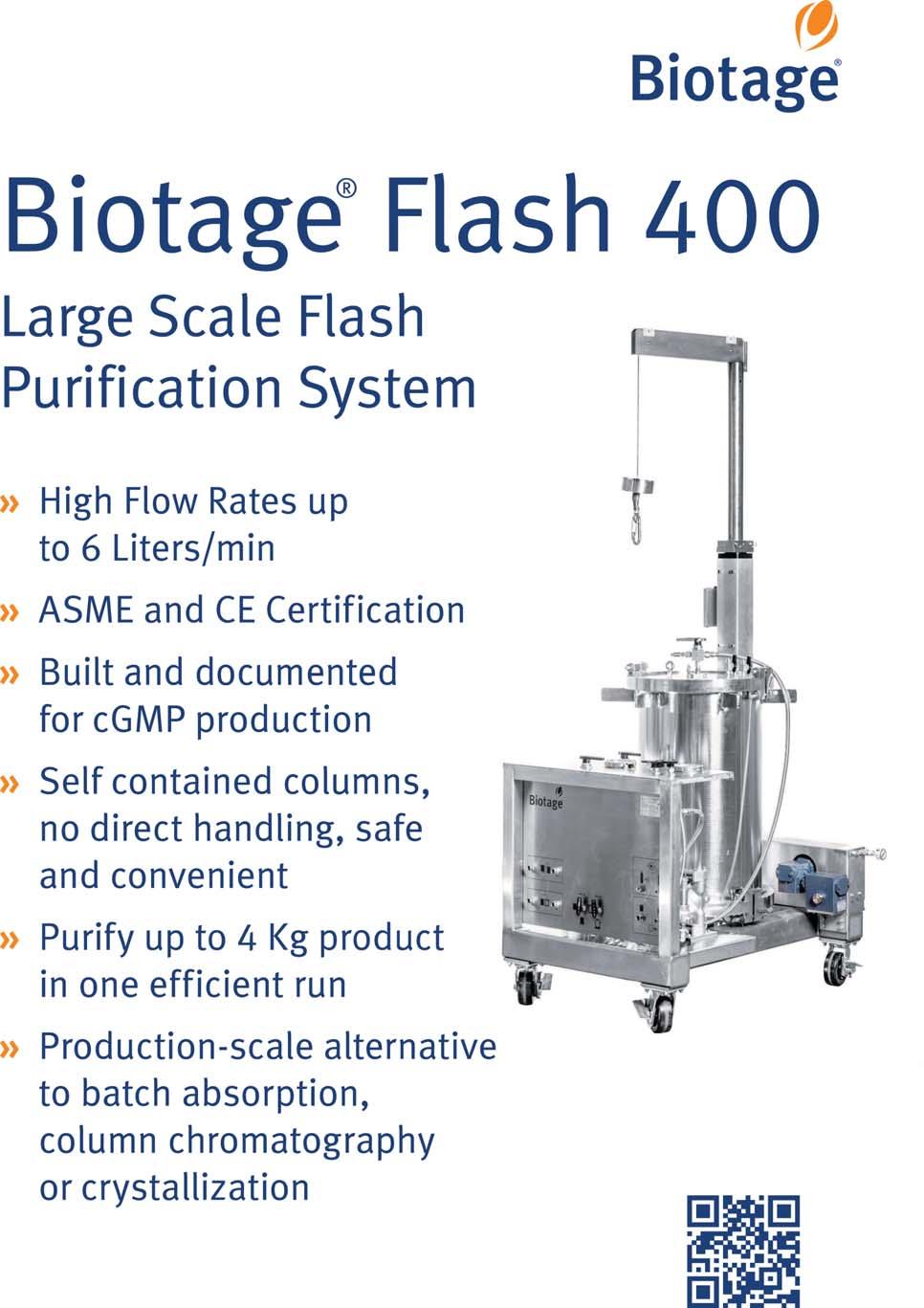
Tell us about the growth opportunities opening up in the pharma sector, globally and in India? How is Amneal poised to leverage them?
What are your current and future areas of focus? Why?
Globally, the pharma industry is quickly expanding, and India is experiencing tremendous growth in this field too. The worldwide pharma market is booming due to factors such as
February2023 EXPRESS PHARMA 19
Pharma businesses are increasingly adopting cutting-edge technologies such as AI, AR/VR,Big Data,and quantum computing to produce personalised solutions, speed up R&D efforts,and alter the user experience
Advancement of immuno-oncologyin India
Leela
,Director,Bugworks
The projected cancer burden in India for 2021 was 26.7 million and is expected to increase to 29.8 million in 2025. Traditionally, cancer patients have been exposed to treatments such as chemotherapy, surgery, and radiation that attack their cancers but often damage the healthy tissues and have serious limitations. For e.g., surgery may not be possible in large, inoperable tumours. At times, the tumours are operable, but cancer has spread to other parts of the body and thus the local
treatment does not work. Chemotherapy kills cells across the body with a high chance that the cells develop resistance over time. In the pursuit to address these challenges, immunologists and oncologists have focused their efforts on deciphering how to harness a patient’s immune system to kill cancer cells. These systematic efforts have led to the development of immuno-oncology (IO) drugs that stimulate the patient's immune system with the goal of achieving long-term and durable responses in a variety of hard-to-treat cancers
offering long-term survival, reduced toxicity from treatment, and improved quality of life. There are several types of IO treatment options, each with
distinct mechanisms of amping up the patient's immune system against cancers. In India, there have been several recent advances in cancer immunotherapy research and treatment. One of the most significant advances has been the development of cancer vaccines. Researchers in India have been working on developing cancer vaccines that can stimulate the immune system to attack cancer cells. These vaccines are still in the early stages of development, but they have shown promising results in preclinical studies.
Another area of research that is gaining momentum in India is the use of immunomodulatory drugs, also known as checkpoint inhibitors. These drugs are designed to remove the "brakes" that cancer cells put on the immune system, allowing the immune system to attack cancer more effectively.

In 2020, the Indian government approved the first immunotherapy drug in India, which is called Nivolumab, and it is available for use as a firstline treatment for a certain type of lung cancer. Additionally,
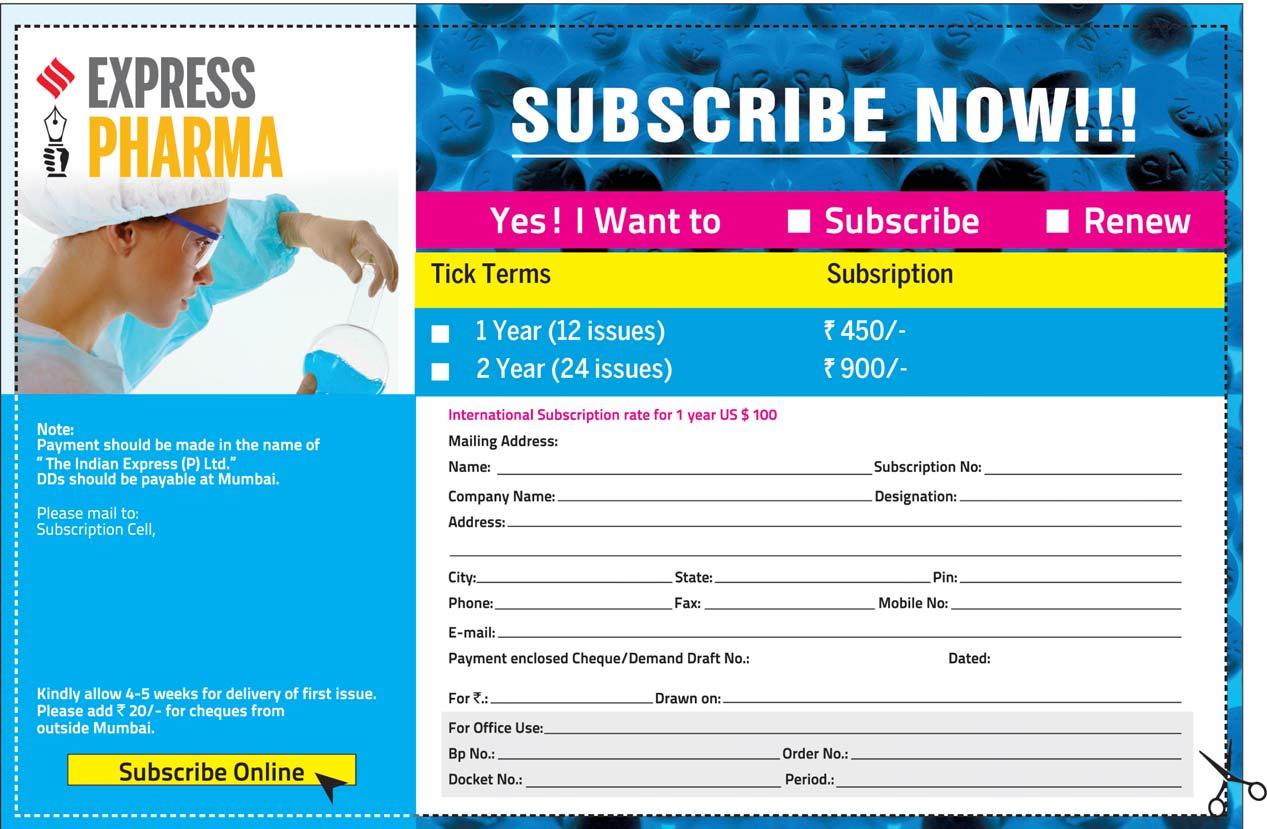
EXPRESS PHARMA February2023 20 RESEARCH
E m a i l : r a j e s h b h a j n i k @ e x p r e s s i n d i a c o m ■ C o n t a c t N o 9 8 6 7 1 4 5 0 2 8 C o m p a n y N a m e - T h e I n d i a n E x p r e s s ( P ) L t d , C o m p a n y A d d r e s s - M a f a t l a l C e n t r e , 7 t h F l o o r , R a m n a t h G o e n k a M a r g , N a r i m a n P o i n t , M u m b a i - 4 0 0 0 2 1 B a n k N a m e - H D F C B a n k L t d ● B a n k A d d r e s s - C - 5 / 3 2 , S a f d a r j u n g D e v e l o p m e n t A r e a ( S D A ) , N e w D e l h i - 1 1 0 0 1 6 ● A c c o u n t - 0 0 3 2 8 6 3 0 0 0 0 0 7 5 ● S w i f t C o d e - H D F C I N B B ● I F S C - H D F C 0 0 0 0 0 3 2 A c c o u n t T y p e - C u r r e n t
Maitreyi
Research elaborates on how immuno-oncology therapeutics are driving progress in cancer treatment and being included in treatment guidelines as the standard of care
RESEARCH
various immunotherapies like chimeric antigenic receptor (CAR) - T cell therapy, natural killer (NK) therapy, and tumourinfiltrating lymphocytes (TIL) therapy are being studied by a few Indian companies and hospitals, some in phase 2 clinical trials with promising early data.
Another area of innovation in India is the use of personalised medicine in immuno-oncology. This approach involves using genetic information about a patient's tumour to select the most appropriate IO treatment for that individual. Research is being conducted to develop methods for identifying which patients are most likely to respond to immunotherapy drugs and to understand the mechanisms behind the clinical response. Some of these path-breaking innovations have a significant artificial intelligence (AI) / machine learning (ML) component. AI is also being leveraged for assessing new and better combination therapies which involve using more than one type of existing treatment in conjunction with immunotherapy for better outcomes.
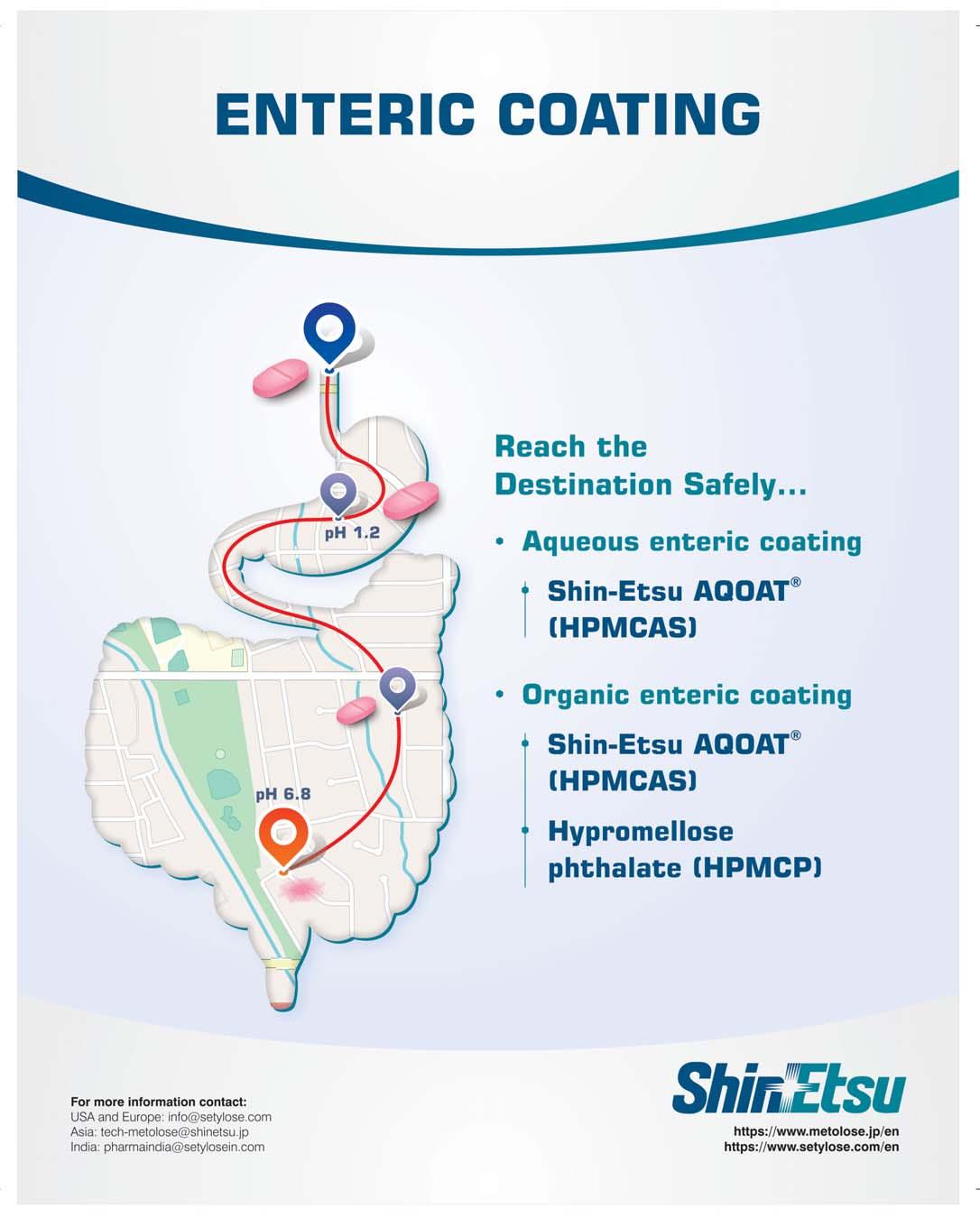
India has all that is needed in terms of expertise, research skills, regulatory framework, and diverse patient populations. It’s noteworthy that over the last decade, clinical data generated in Indian sites have been able to support drug approvals in the US and the EU. India remains steadfast in its intent to become a major center for oncology clinical trials. With an improved and streamlined regulatory environment, and various governmentfunded and private cancer hospitals that can support multicenter clinical trials, India is touted as the next hub for global clinical trials.
Cancer treatment in India is on par with the best in the world and there are ongoing discussions that a few Indian pharma companies and start-ups are likely to offer cell therapy-based treatment for cancers at a fraction of global and US prices. These innovative initiatives give many cancer patients hope. India is steadily building an innovation-centric ecosystem with the right mix of technology, hospitals, research centers, patient communities, strategies, and
collaborations.
Health insurance companies have been directed by regulators to recognise and reimburse IO treatments. Such decisions are likely to ensure equitable access and affordability to newer IO therapies that offer sustained
clinical benefits and overall survival. The integration of health insurance into a high-quality cancer care ecosystem augur well for needy cancer patients.
For millions of poor Indians who previously lacked health insurance, thePradhan Mantri Jan
Aarogya Yojanahas changed the game. Recently, a panel has proposed that the government consider waiving GST on cancer drugs and audit the prices of cancer drugs.
IO therapeutics are driving the much-needed change in can-
cer treatment and are increasingly being included in treatment guidelines as the standard of care. India is on the path to bolstering its reputation in developing and offering innovative, affordable, accessible cancer care.
February2023 EXPRESS PHARMA 21





EXPRESS PHARMA February2023 22 cover )
The Sikkim Pharma Summit brought stalwarts,experts and game-changers of the state’s pharma sector together to deliberate upon the opportunities and challenges in the state,discuss strategies to optimise growth potential, and share learnings from the COVID-19 pandemic to enable sustained progress in a rapidly changing global milieu
 By EPNews Bureau
By EPNews Bureau
February2023 EXPRESS PHARMA 23
Welcome Address
India Pharma Inc has bold aspirations for the future, but the ability to sustain performance, move up the value chain and capitalise on the potential opportunities in important markets, will be the keys to success.
As the state government of Gangtok has taken a lot of initiatives to create a conducive environment for pharma companies to set up their base, Sikkim can play a crucial role in India Pharma Inc’s growth trajectory. Therefore, Express Pharma, a leading industry publication from The Indian Express Group, organised the fourth edition of the Sikkim Pharma Summit on 18th November, 2022.
The summit sought actionable insights to reinvigorate Sikkim’s pharma sector and

leverage its capabilities to turn India into a global supply destination.
The topics covered by the
industry experts included impact of COVID-19 on Sikkim Pharma Inc, strategic alliances to enter newer mar-
kets, following of the best manufacturing practices, policy framework for drug prices, acceleration of Sikkim’s growth story, building of stronger quality systems for improved compliance and evolving of a regulatory landscape.
The welcome address to inaugurate the summit was given by Akanki Sharma, Senior Correspondent, Express Pharma. She began her address by informing the audience that Express Pharma has been a leading publication of the pharma industry for over the past 20 years. "However, we are not just interested in tracking the industry's growth, but we want to be the partners and facilitators of progress; and, this summit is one of our endeavours in this
Critical product solutions for the pharma industry
Upendra Singh Bisht, Manager-Business Development, Ami Polymer, while speaking during the Sikkim Pharma Summit, notified about the various products and services offered by his company to the pharma industry. He mentioned about the key products that are offered by Ami Polymer, which include tubings, single-use assemblies, reinforced hoses, tri-clover gasket, inflatable seal, customised goods and sieves/screens.
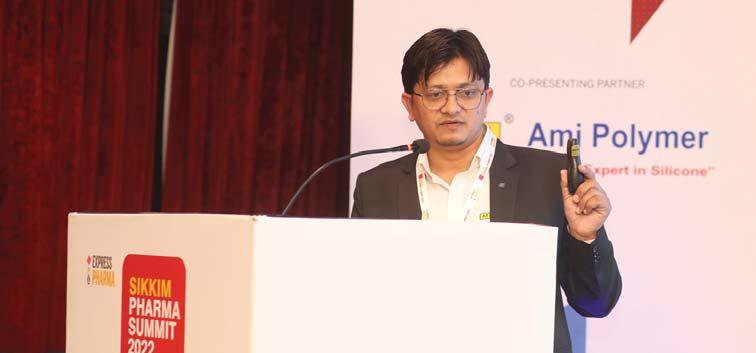
He also told the audience that there are six varieties of polymer range: Silicone, EPDM, FKM, NBR, TPE and plastics. Further elaborating on the pharma tubings, he then mentioned their names and characteristics. The names of the pharma tubings are: Imapure, Imaflow, Imapex, Imaprene, Imaweld, Imaliner, Imachemton and Imafep. He, then, one-by-one explained the characteristics and usage of the
pharma tubings offered by Ami Polymer.
Thereafter, he talked about single-use assemblies that include quick customisation with customised options including aseptic connectors, reinforced hose, polypropylene couplings, tubings, filters and 2D bags,
along with quick delivery support. Their major components are in-house designed and manufactured. Apart from it, he also mentioned about the various pharma hose brands, namely Imafit (platinum-cured silicone hose reinforced with polyester braiding), Imavac (platinum-
cured silicone hose reinforced with SS 316 helical wire), Imafit DB (DB-silicone-platinum cured double-braided polyester hose), Imaflexxie (PTFE lined hose with SS 304 braiding having outermost platinum cured silicone cover), Imawrap (platinumcured silicone hose reinforced
direction," she highlighted.
She further said, "Our vision is to bring together the pharma leaders and experts in the state’s capital city, Gangtok, and initiate discussions, which would spur the sector to loftier positions. We believe that if the opportunities in different pharma hubs of the country are put to optimum utilisation, it would pave the path for India Pharma Inc's progressive future. We hope that this summit will set the stage for bigger and greater editions in future."
The welcome address was followed by a lamp-lighting ceremony. Thereafter, participants gave the talk on the platform Express Pharma created for the industry stakeholders to deliberate upon the issues of importance
with 4 ply of polyester fabric and SS 316 helical wire), Imavacfit (platinum-cured silicone hose reinforced with polyster braiding and SS 316 helical wire).
Following that, he spoke about inflatable seals whose applications are: powdered drug processing units, medical sterilisers, smokehouse door inflatable seal and sliding door seal semiconductor wafer processing unit.
Mentioning about sieves, he said, “Sieves are used for particle size distribution of drug products.”
His next point of talk was Orings that are available in multiple MOC like silicone, FKM, EPDM, FEP encapsulated, nitrile and PTFE. He also spoke about tri-clover gaskets that can be used by pharma manufacturers. He then mentioned about customised molded goods that include over 5,000 varieties in compression and injection.
EXPRESS PHARMA February2023 24 cover )
Upendra Singh Bisht,Manager-Business Development,Ami Polymer
Data integrity,importance and compliance
Amit Shandilya, Sr GM, Zydus Life, started his presentation by sharing the history of data integrity with the audience. Citing an example, he said that regulators uncovered list of issues including fake drug quality data and banned 30 products from the US market; and in 2009, the United States Food and Drug Administration (USFDA) started the post-inspection responses programme. He further informed that in the last three years, the USFDA has issued over 30 warning letters and Form 483 inspectional observations related to electronic records.
He then talked about the ALCOA principle in data integrity. ALCOA stands for Attributable (where sign and date are required), Legible (data must be readable), Contemporaneous (data must be recorded concurrently), Original (data must be preserved in its unaltered state), Accurate (data must be actual and free from errors). In addition, he said, “Data must be recorded in consistent manner on authorised media, and must be available throughout lifecycle.”
Suggesting to bring in the tool of automation for maintaining data integrity, Shandilya also said, “We cannot change the human condition, but we can change the conditions under which humans work.”

He further put forward another way to sustain data integrity – Quality Excellence by Sustainable Transformation (QUEST). Under QUEST, he recommended QUEST circles across site, daily dialogue, idea generation and implementation, GEMBA walk by leadership team, focus on data integrity training (bottom to senior management), displays for correct practices of quality culture, town hall with CW to senior management, display of senior management’s contact number (openness for DI, GMP and GDP discussion), and R&R for the best-quality idea implementation. He also said that one can
trust, harmonise, collaborate and communicate for attaining better data integrity.
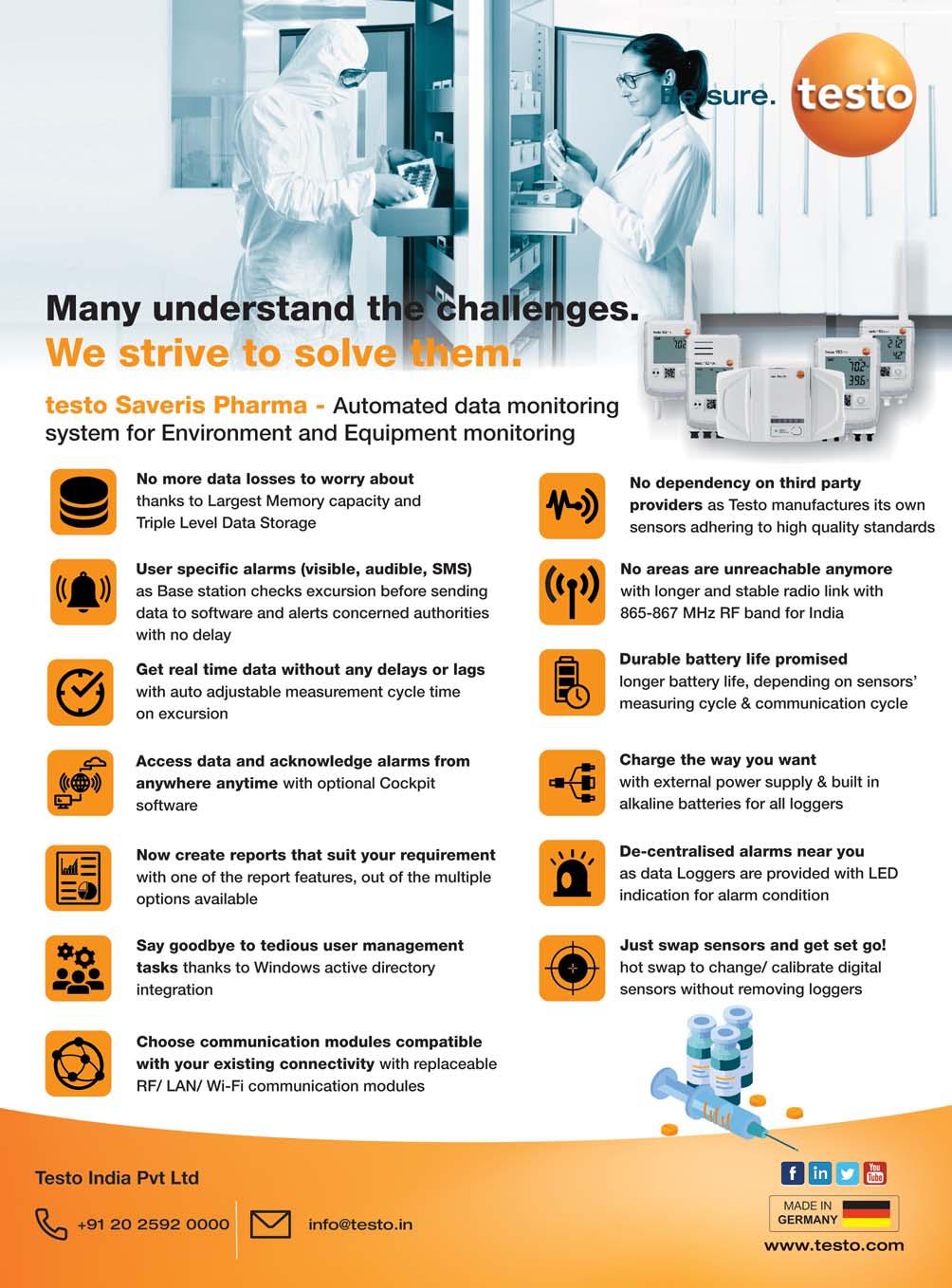
“Data integrity breaches in-
volve some unintentional mistakes. It’s all about behaviour, processes, culture, awareness and education,” he notified.
February2023 EXPRESS PHARMA 25
Amit Shandilya,Sr GM,Zydus Life
Pioneering growth through Pharma 4.0
Sharing his views with the audience regarding Pharma 4.0, Dr Nirmal Kumar, VP – Quality, Alkem Laboratories, said that digitisation, robotics/automation and computing advance and Artificial Intelligence (AI) can help the pharma industry grow to a large extent. While digitisation involves proven data integrity with more control, fewer errors, increased accessibility and real-time product quality information, robotics/automation is a technical advancement that leads to high productivity. Apart from it, computing advance and AI bring more transparency providing efficient coordination, communication and information systems.
He further said that through Pharma 4.0, pharma products can be manufactured with maximum product and process understanding, data integrity by design, efficiency and optimal resource alloca-
tion on the basis of full digital data transparency – to the benefit of the patient. Mentioning the ICH guidelines to Pharma 4.0, he emphasised that pharma industry should move deeper into the fourth industrial revolution. With this, the pharma manufacturers can

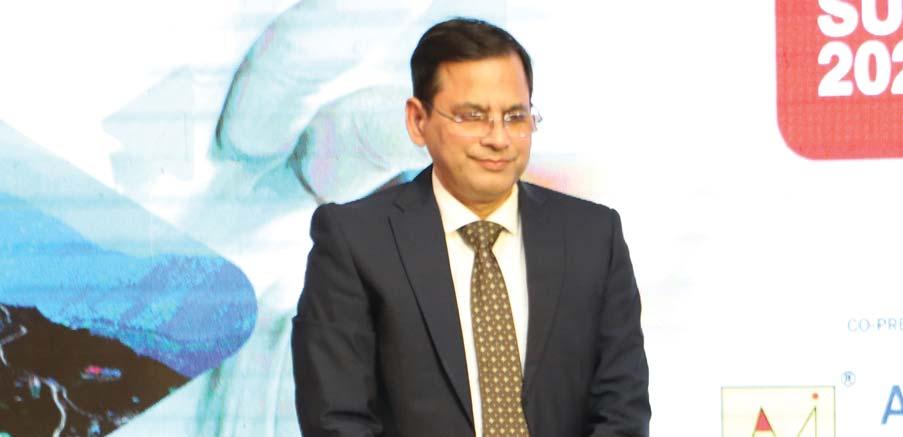
also ensure future success in the delivery of therapeutic medicines to patients. He, however, warned that automation drive is difficult unless consistency is there.
In addition, he stated that Pharma 4.0 involved Quality by Design (QbD), AI, digital ad-
vances, process data maps, critical thinking, integrated planning, predictive maintenance and process automation, among others. All these then lead to patient-based drug design, enhanced productivity, resource optimisation, highest regulatory compliance and
Evolution of cellulose in tableting technology
Beginning his presentation with an overview of his company, Suyesh Kale, Manager (Technical), JRS Pharma, mentioned about the ‘Vocal for Local’ concept launched by Prime Minister Narendra Modi. He stated that under this concept, JRS has come up with ‘Made in India’ MCC: JRS-GMW. “This new plant is a state-of-the-art facility modelled on other international plants of JRS group, and is completely automated plant, starting from processing the raw materials to packaging the finished products. The facility is EXCIPACT-certified and is an exact replica of international plant in all aspects,” Kale informed.
He then spoke about the evolution of cellulose which began with Arbocel. He said that Arbocel is solid cellulose prepared by mechanical fragmentation. Fur-
thermore, the company developed Vivapur, Emcocel, Flocel Plus and Prosolv, wherein Pro stands for problem and Solv
stands for solvent. So, it’s a problem solver Silicified Micro Crystalline Cellulose (SMCC). It consists of two components –
MCC and CSD – both of these, through synergistic combination and a unique process, lead to the formation of Prosolv
customer satisfaction.
Talking about Manufacturing 4.0: Packaging Shipper Transfer System with AI integration, he explained that AIbased shipper identification strengthens the product transfer system, helps in picking posts in automated warehouses, optimised order preparation areas, automatic order sorting and assembly and verification posts.
He, at last, concluded his presentation by saying, “Pharma 4.0 embeds health regulations which is a contrast to common Industry 4.0 approaches. It breaks the borders across the organisations by creating AI-based linkages between drug designs, suppliers, R&D, process verification, digital data, healthcare regulations and other stakeholders. Pharma 4.0 is not a project of Information Technology (IT) department, rather, it is a supporting function.”
SMCC, which has a unique and superior flow property and is almost dust-free. Prosolv SMCC by JRS Pharma promotes interactive blending, and, thus, content uniformity.
He then emphasised on the benefits of Prosolv SMCC in roller compaction applications, which include silicification of MCC that results in an increase in surface area, which further leads to an increase in area for binding interaction between the individual particles; and silification leading to improvement in both the flowability and re-compaction properties of compacts; among others. Apart from it, this product also offers advantages for high-doses as well as low-dosed Active Pharma Ingredients (APIs), sticky, poor-flowing, compression-sensitive, baddissolving and hygroscopic APIs.
EXPRESS PHARMA February2023 26 cover )
Dr Nirmal Kumar,VP-Quality,Alkem Laboratories
Suyesh Kale,Manager (Technical),JRS Pharma
NEXTGen Lab Water Purification Systems
Gourab Ghosh, Product Manager, Merck Life Science, began his talk by introducing Merck’s new product Mili-Q. “Over a period of time, we have done significant innovation, which actually helped us to serve all of the dayto-day needs of our customers. We have come up with a solution in our next generation of the system where we have made the compact model, and this model was so compact that any of the users can handle things on their own and do not depend on anybody else to change certain things.”
He further mentioned that Merck has also developed Point of Dispensing (PoD), and with the help of the PoD with a single Mili-Q system, one can actually connect multiple PoDs and each and every point of PoD option, one can connect specialised ap-
cGMPin plant automation of oral dosage forms
Delivering his address on the topic
‘cGMP in plant automation of oral dosage forms,’
P Ramesh, Sr VP--Technical and Operations, Microlabs, explained to the audience that cGMP is part of quality assurance which ensures that products are consistently produced and controlled to the quality standard appropriate to their standard use. He mentioned that it ensures quality products, reduces rejection and satisfies customers.
He also spoke about the principles of cGMP which include designing and construction of the facilities and equipment properly, following written procedures and instructions, document work, validating work, monitoring facilities and equipment, writing step-by-step operating procedures and working on instructions; designing, develop-

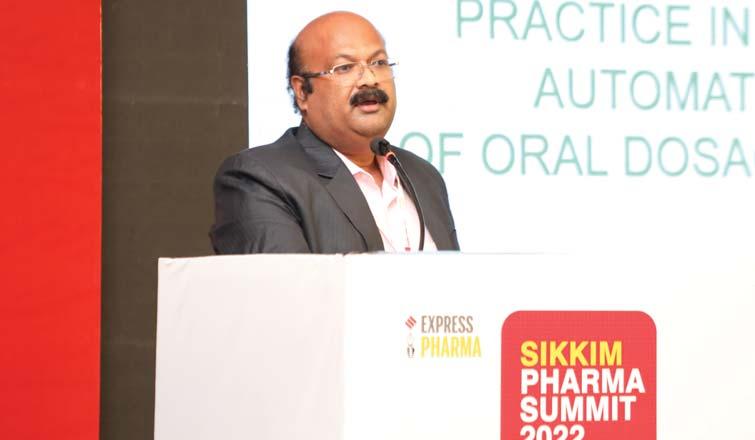
ing and demonstrating job competence; protection against contamination; controlling components and product-related processes and con-
ducting planned and periodic audits.
He then talked about the parameters of interest for GMP practice through au-
plication, and based on that, one can continue to dispense water.
He further said, “We are on the verge of the seventh generation of the Mili-Q system. Few of the products have already been introduced in the market, but few are yet to come to suffice the day-to-day needs of those in the pharma industry.”
Speaking more about the Mili-Q, Ghosh stated that it has got three manual flow rates, check and dispense lights, onecheck volumetric dispense, ‘ata-glance’ quality monitoring, and rapid data and access management, among other qualities. It has also got 20 per cent reduced plastic weight, 33 per cent smaller and lighter purification cartridges, >10 per cent overall energy savings and paperless data management. In addition, in the lab close mode, it optimises the rinsing process.
garding the layout and material-handling systems, he notified that plant layout should be designed according to the process flow for unidirectional movement of man and material. He also informed that following dispensation, the flow of material can be monitored at each and every stage of manufacturing, i.e. granulation, compression, coating, inspection, packing and dispatch through automation in material handling system. Further, rejection of each manufacturing stage can be monitored and reconciled.
tomation which include layout and material-handling systems, quality systems, and innovation and automations in manufacturing system. Re-
Apart from it, he stated that Material Tracking System (MTS) is a helpful tool to monitor process flow, avoid mix-up and control movement of material from one stage to another stage. Whereas the benefits of the quality systems are that it is time-saving and involves less risk.
February2023 EXPRESS PHARMA 27
Gourab Ghosh,Product Manager,MerckLife Science
PRamesh,Sr VP- Technical & Operations,Microlabs
GLIMPSES OFSIKKIM PHARMASUMMIT2022






EXPRESS PHARMA February2023 28 cover
)

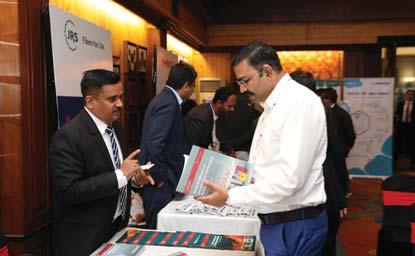

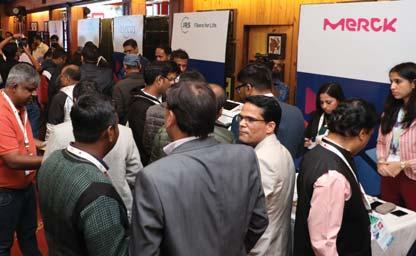

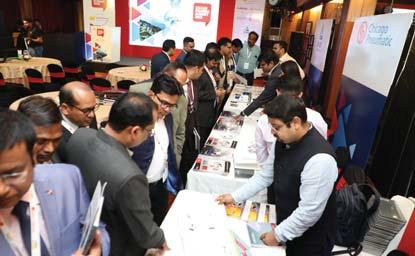
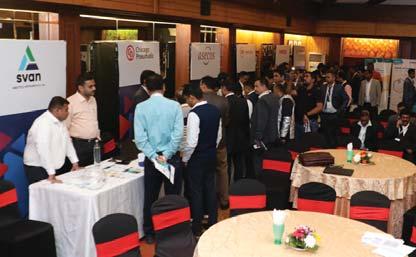
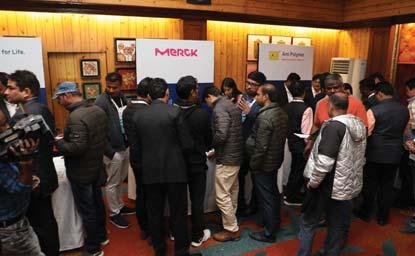

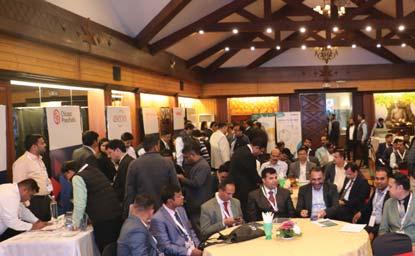


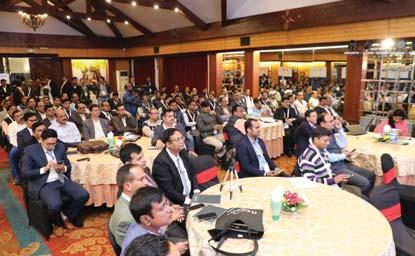
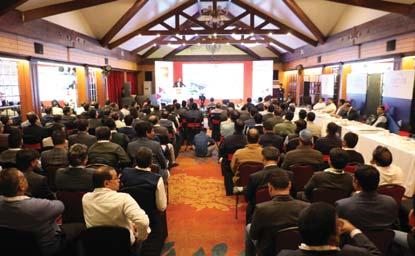

February2023 EXPRESS PHARMA 29
GLIMPSES OFSIKKIM PHARMASUMMIT2022
















Silver Partner
TECHNOLOGY
Digitisation of IP: Acandid viewpoint
Dr Rajeev Singh Raghuvanshi, Secretary-cum-Scientific Director,Indian Pharmacopoeia Commission (IPC),speaks exclusively to Akanki Sharma and explains the various facets and advantages of digitising the Indian Pharmacopoeia (IP).Excerpts below:

IPC is planning to digitise the Indian Pharmacopoeia (IP). What advantages will it bring to the organisation itself as well as the industry stakeholders?
We have decided to digitise the IP because it has got several advantages, and a number of problems also get solved. Digitisation makes many things possible that we might not do easily today. The first and foremost is to increase our reach. Apart from it, we can also have enough flexible pricing for a digital product, which helps us in providing better services to the stakeholders in terms of the payments they make. For instance, many people today think that IP book is quite costly; digitisation will help in addressing this problem also. That’s because if prices are flexible, people can even start taking IP on a subscription basis.
Besides, for us, the benefit is that we can do a lot of research on the uses of IP. For instance, at present, we have no idea how someone, after purchasing the IP, brings it to use. There is no monitoring system at the moment regarding this. Furthermore, we can have a good research on the uses of IP and IP monographs. Ultimately, it helps us to know what advantages the stakeholders are getting from all that we are doing. Further, we will have an option of tracking every use of the product like which monograph was used the most, or which one was used less by stakeholders, etc. and then we can prioritise our work on the basis of the uses, which is a huge advantage. Then, we can offer our services in a better way
because we know our customer better with the digital product.
In addition, it will also prevent counterfeiting of the physical copies of the IP.
That apart, we are also working on digitising the different processes of the Indian Pharmacopoeia Commission (IPC), too. That’s because when we run an institution, the work gets done on a physical basis in the government departments. We are trying to convert that whole physical process to digital process. We are talking to vendors to develop Enterprise Resource Planning (ERP) for IPC, so that our whole working process turns digital.
We are also trying to convert our library into a digital product. It’s still a thought process, though. We haven’t begun working on it
yet. We have a rich library, and we want to convert it for stakeholders for online consultation. Once it happens, we will offer it to students; industries, especially Micro, Small and Medium Enterprises (MSMEs) because their resources are limited; research institutes, etc.
What is the current status of this digitisation process?
We have recently floated the tender. Our target is that we will finish this by the end of this financial year. Ultimately, we have to develop this product through the government’s system via the Government e Marketplace (GeM) tender, which further has its own procedures. Furthermore, since IP is a complicated product and not just a simple digital book, there are not many vendors in
the market who can make this product as per our expectations. We have an expert committee including people from the industry who are experts in developing digital products, who will evaluate the vendors. So, there is a possibility that we may not get the required number of good vendors for the product, and there are a number of cycles that might take place to evaluate and select the right vendor.
What is the primary parameter that you have set for choosing these vendors? The most important thing is that we have asked the vendors to provide their solution architecture. Often, the small-scale vendors don’t have much knowledge about such complicated development, but they put it on GeM because, for them, it’s an opportunity by the government and they are keen to grab it. They don’t have their own internal expertise. So, we have asked for their solution architecture, which our technical committee (including a total of six members) will be evaluating before going any further.
Talking about digitisation, it is said that pharma industry lags behind most of the industries. What do you think are the primary reasons behind it?
Most of the big pharma companies are doing digitisation. The issue is more on the MSME side because they don’t have the skill and finances to do that, and their workforce is not trained. So, in the MSME domain, digitisation is almost zero. Except that, at present, over 50 per cent of the
domestic pharma production takes place at MSMEs. So, that is one area where they need to take initiatives to solve these problems in partnership with maybe, the state governments, central government, Department of Pharma (DoP), or whosoever it is. However, this needs focus because MSMEs will face problems in digitisation. Big companies have already started doing it and many of them them have already done it.
Besides, there is a historical reason behind pharma companies being laggards in terms of digitisation. This is because this industry had the lowest competition, historically; and, when competition is not there, people don’t think of innovations.
Tell us about the IPC's achievements in the past few years.
In the past one-and-a-half/two years, our visibility has increased. We have started talking to people more often. On the technical side, we are doing a number of changes in the IP. There are stakeholders who are appreciating the changes, and there are people who are not too enthusiastic about the process. A lot of changes happened in the IP also. Our inventory at the Intellectual Property Rights (IPRs) now ranks third in the world. In addition, we have over 1,000 reference materials in our inventory today, which is a huge increase in the inventory in the last two years (it’s almost more than double and even its usage has increased at such a scale).
akanki.sharma@expressindia.com
journoakanki@gmail.com
February2023 EXPRESS PHARMA 31
INTERVIEW

BUSINESS AVENUES EXPRESS PHARMA February2023 EXPRESSPHARMA 32
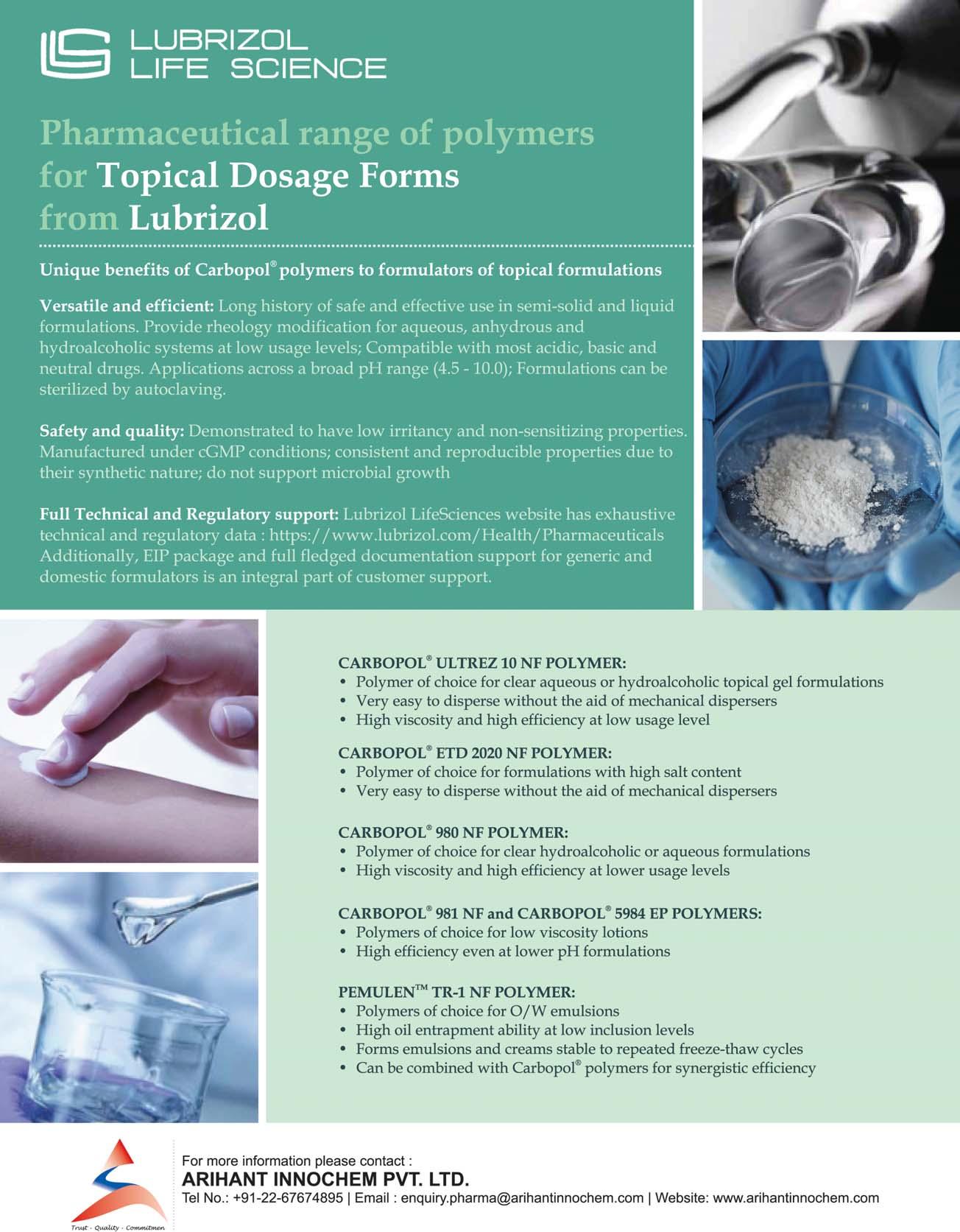
BUSINESS AVENUES EXPRESS PHARMA EXPRESSPHARMA February2023 33







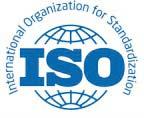








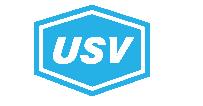



BUSINESS AVENUES EXPRESS PHARMA February2023 EXPRESSPHARMA 34
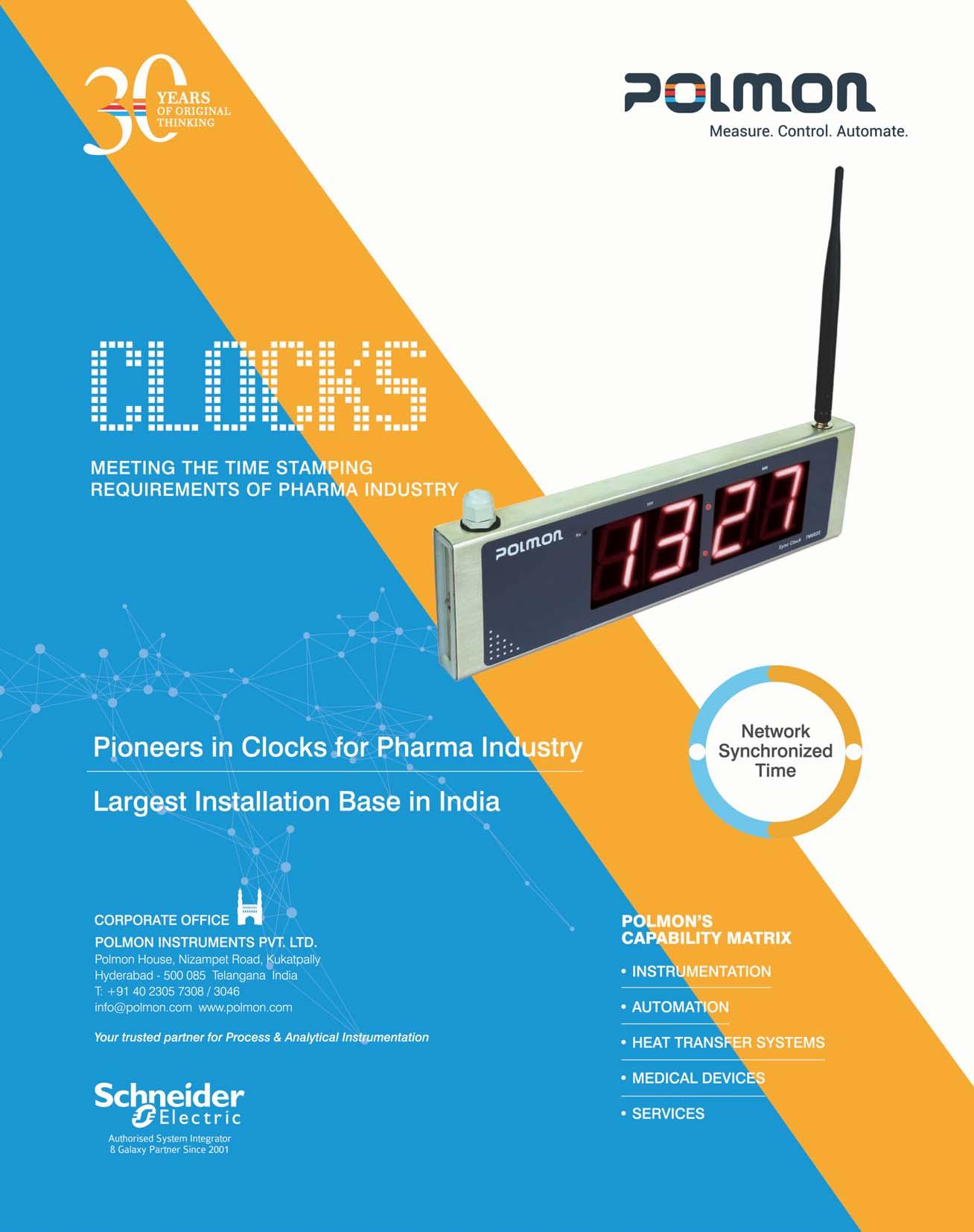
BUSINESS AVENUES EXPRESS PHARMA EXPRESSPHARMA February2023 35
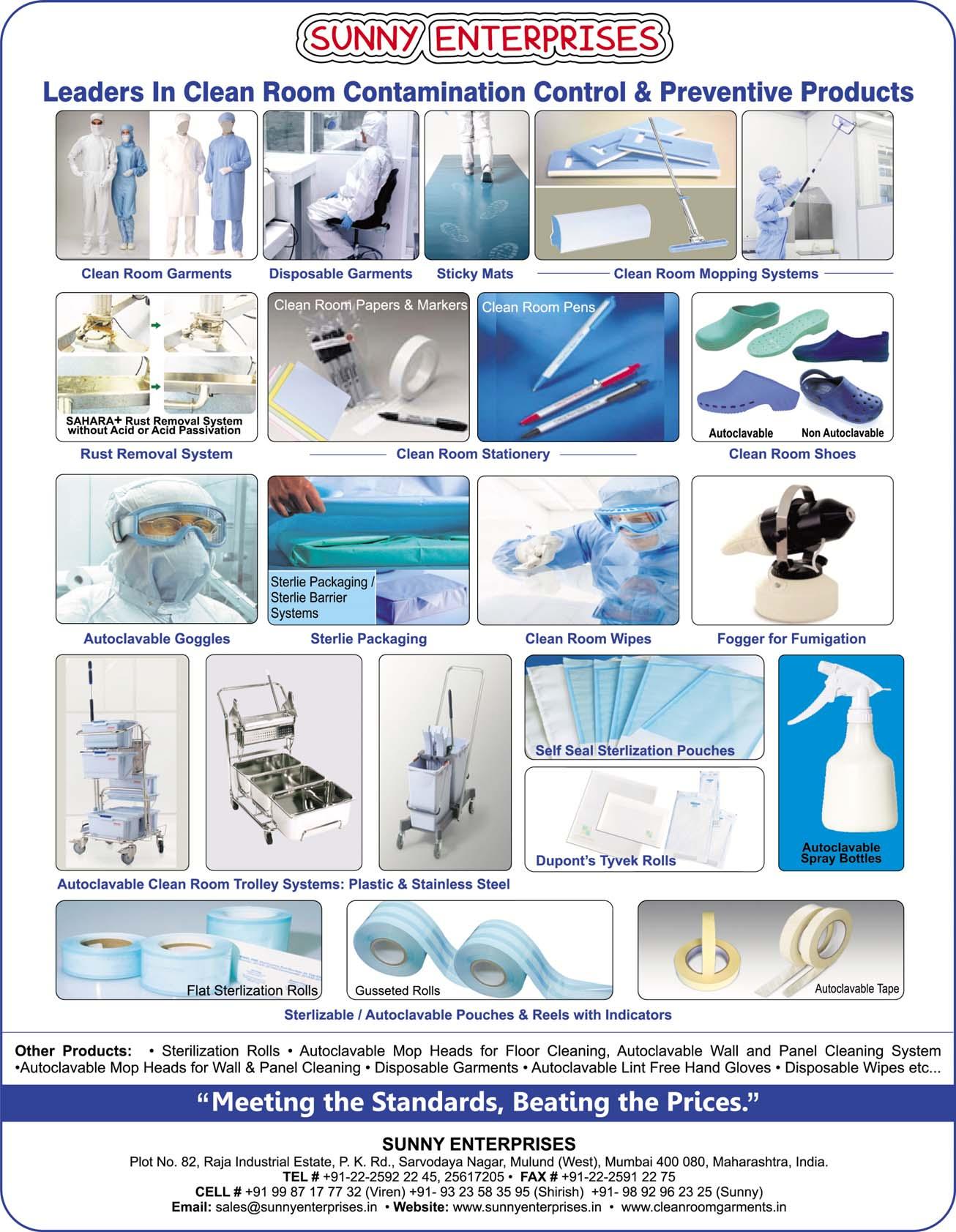
BUSINESS AVENUES EXPRESS PHARMA February2023 EXPRESSPHARMA 36
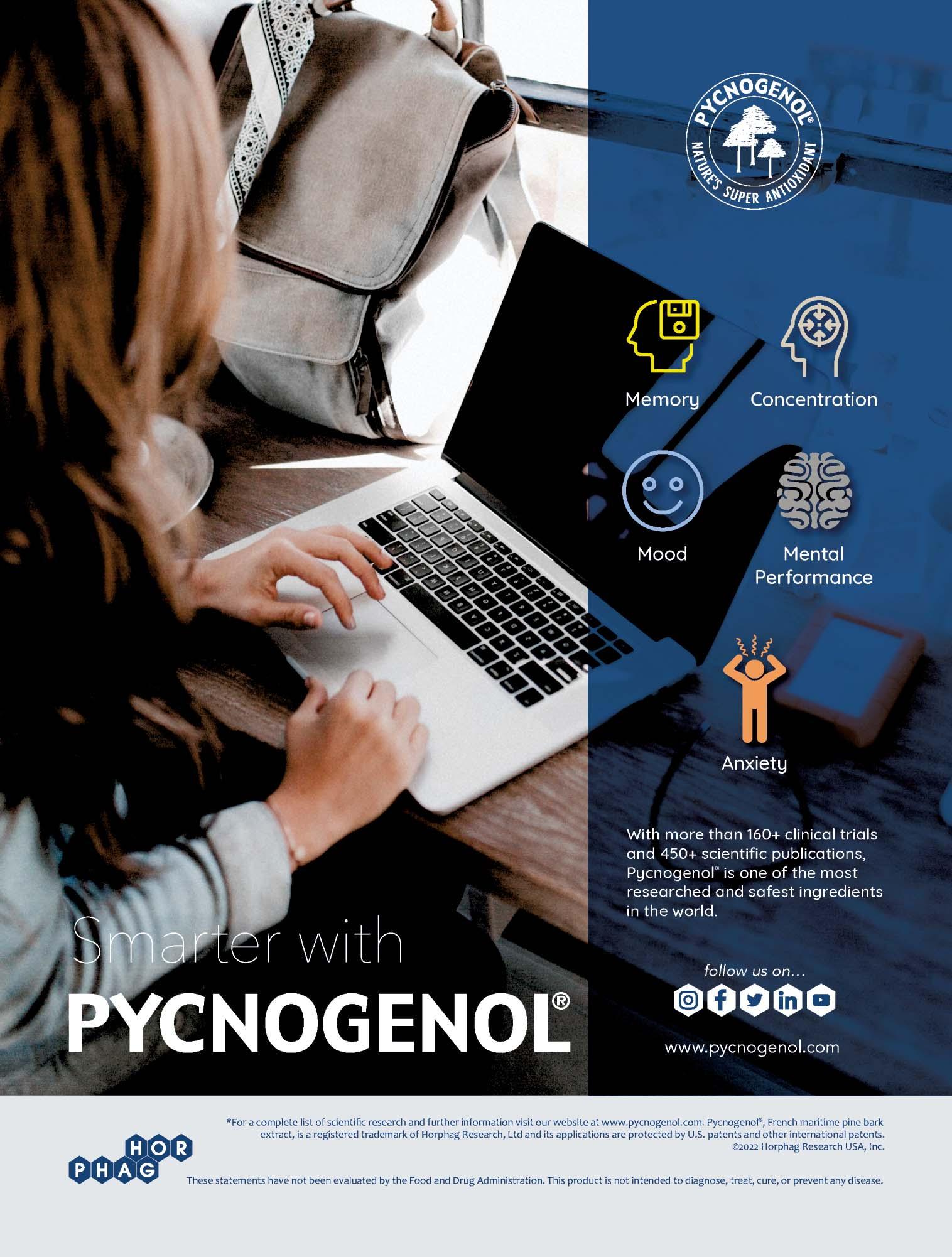
BUSINESS AVENUES EXPRESS PHARMA EXPRESSPHARMA February2023 37



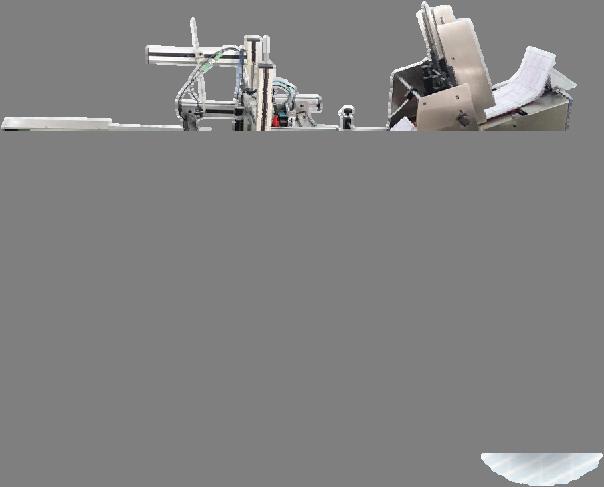






































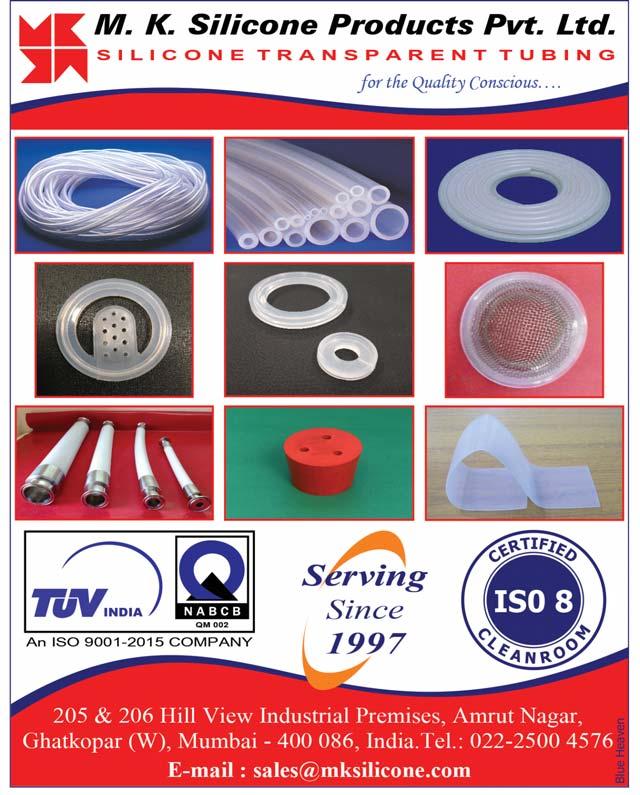

Ultimate Solution for Marking and Coding Systems... Scan this QR code to view product applications MVT Series 1 Media Transport System X1 Jet Camera BUSINESS AVENUES EXPRESS PHARMA February2023 EXPRESSPHARMA 38
The

BUSINESS AVENUES EXPRESS PHARMA EXPRESSPHARMA February2023 39

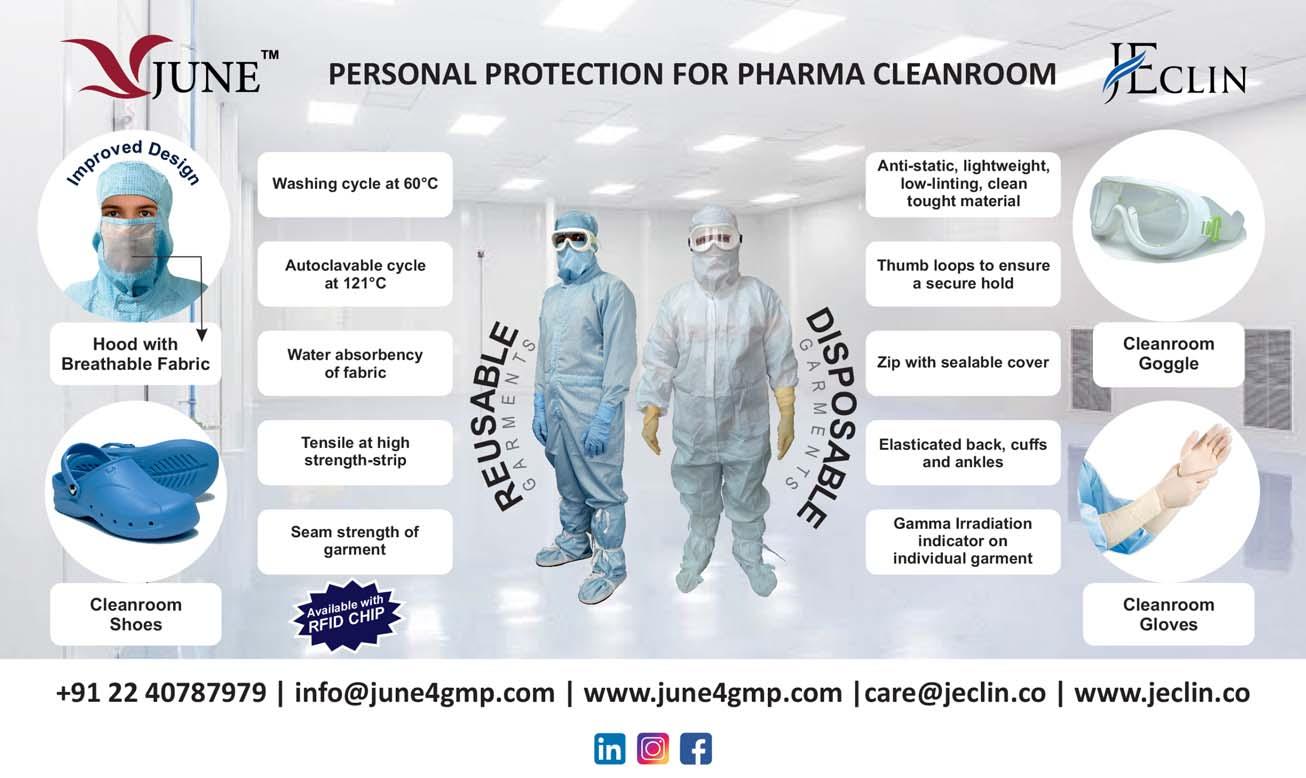
BUSINESS AVENUES EXPRESS PHARMA February2023 EXPRESSPHARMA 40

BUSINESS AVENUES EXPRESS PHARMA EXPRESSPHARMA February2023 41
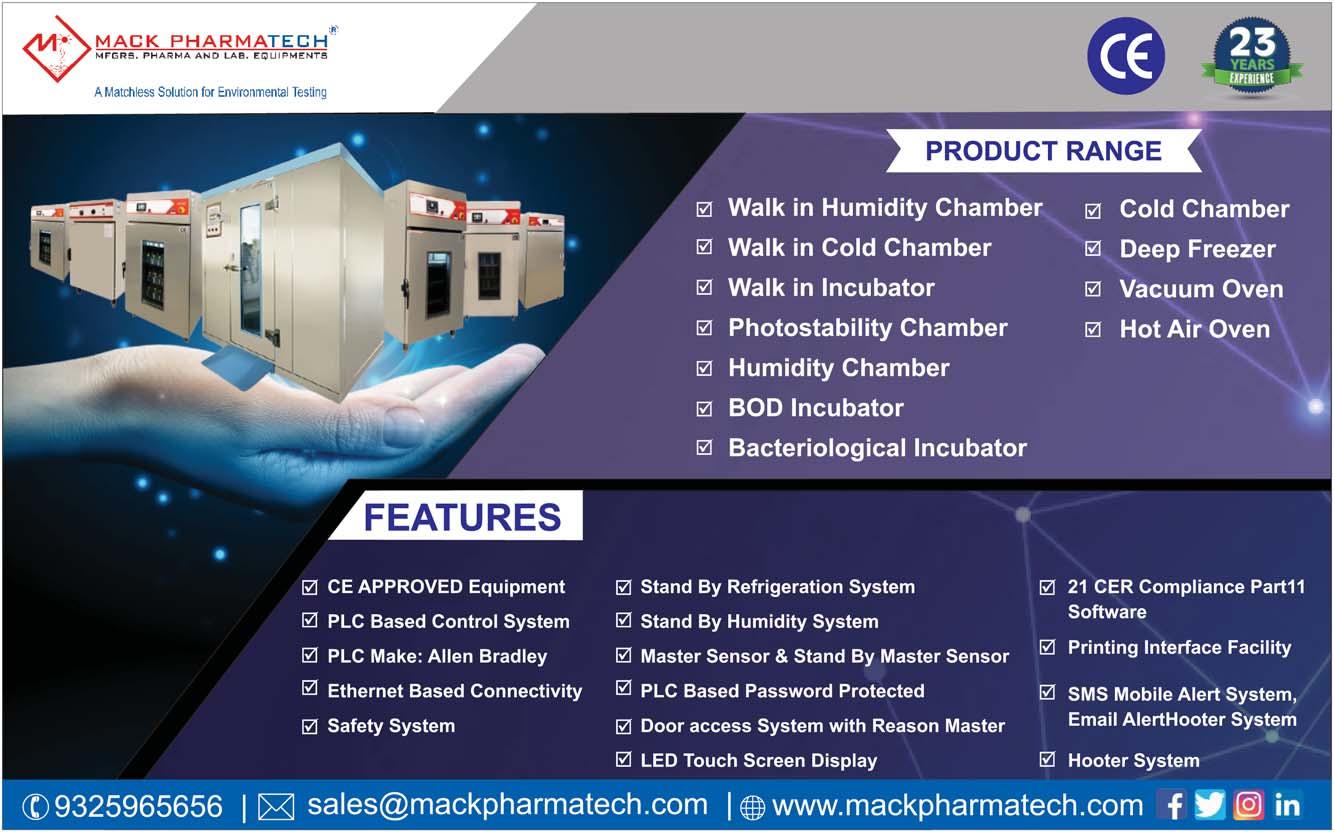
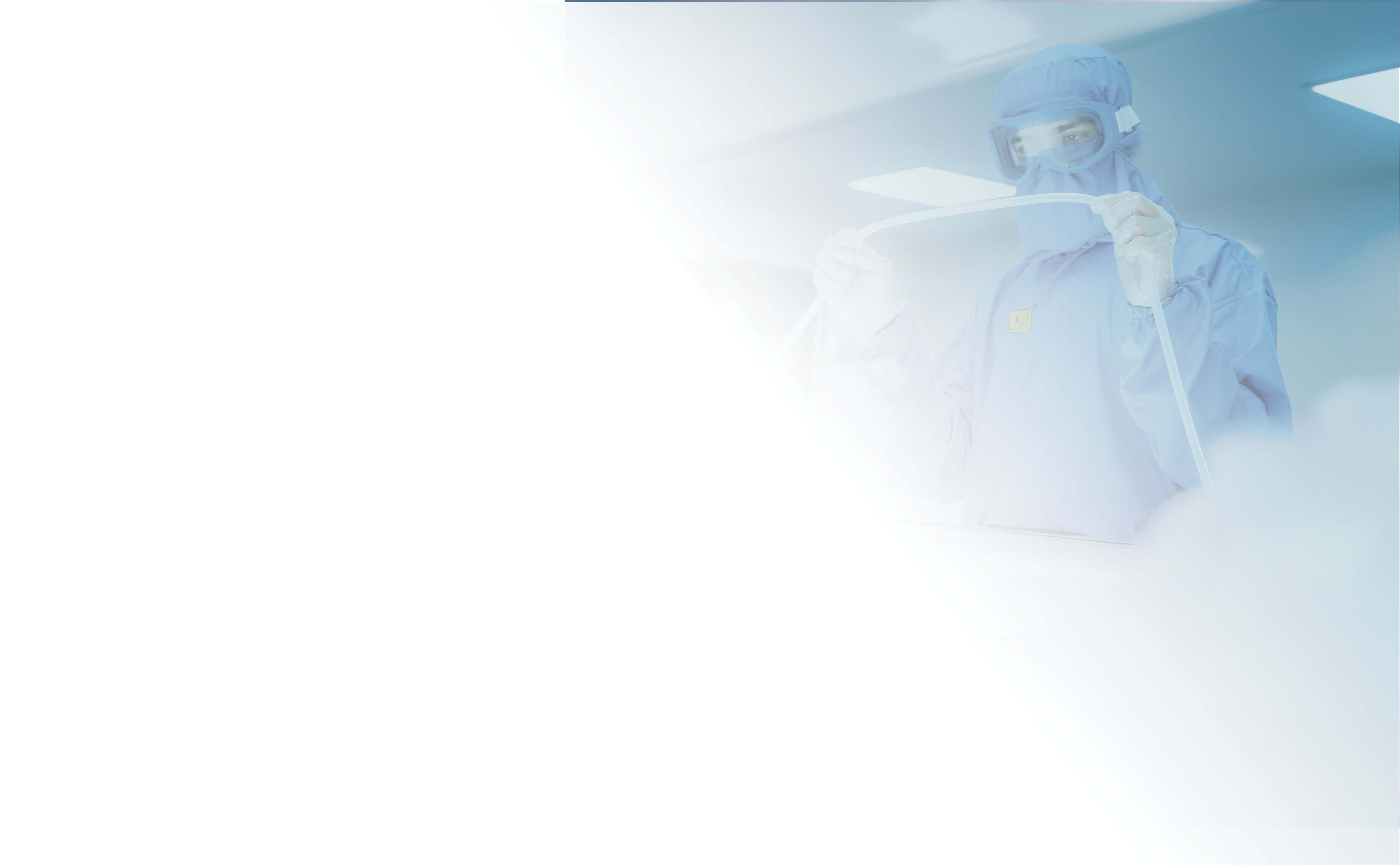








































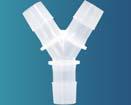




BUSINESS AVENUES EXPRESS PHARMA February2023 EXPRESSPHARMA 42
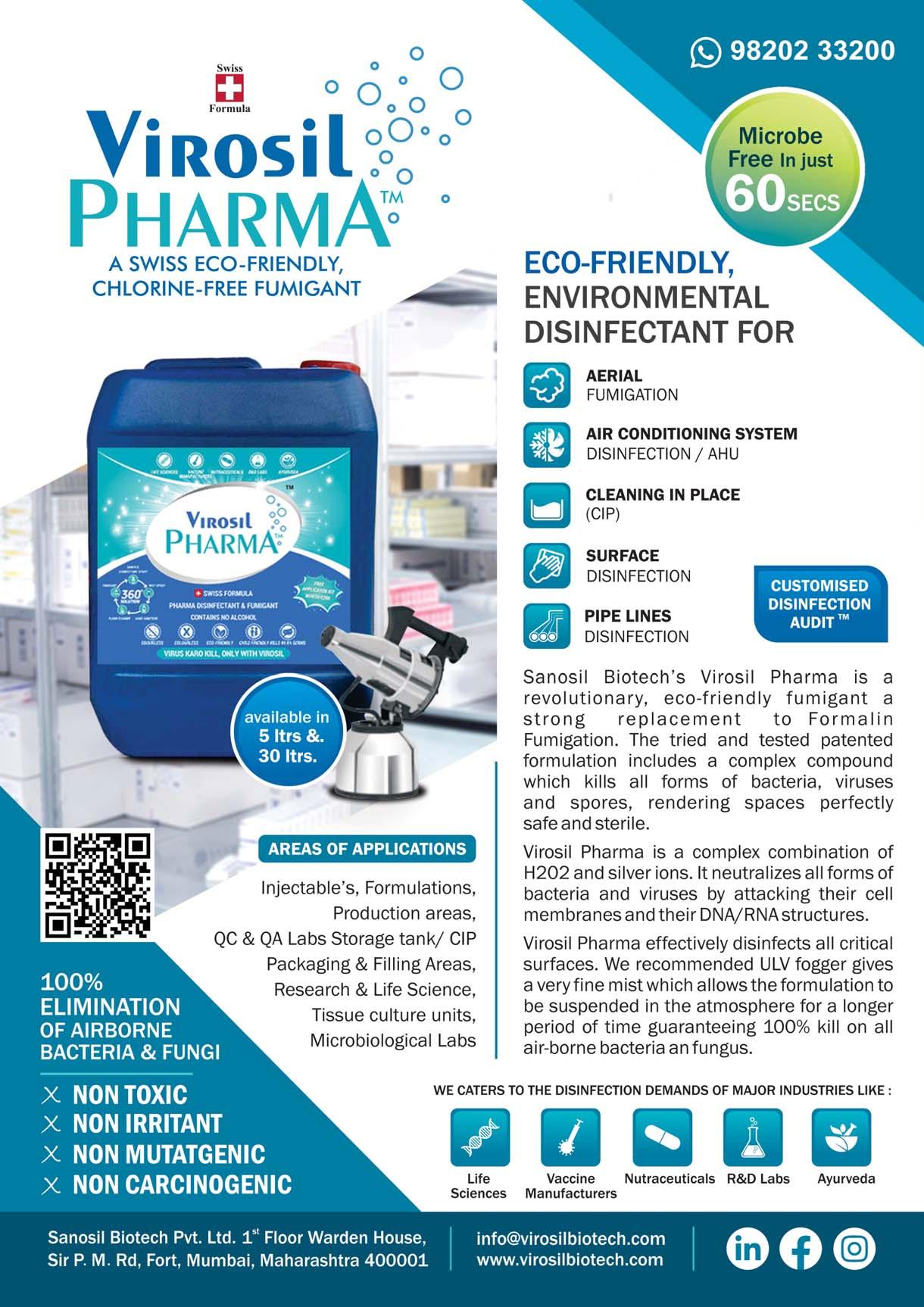
BUSINESS AVENUES EXPRESS PHARMA EXPRESSPHARMA February2023 43
OsmoTECH®XTSingle -SampleMicro-Osmometer
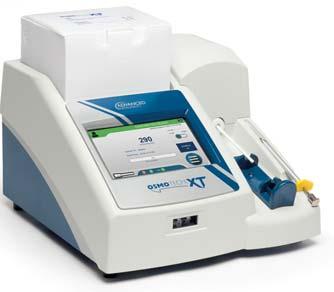




Nowavailable!
Best-in-classosmolalityperformance, designedwithyouinmind.

HIGHLIGHTEDFEATURES:

Offersthewidestrangeofosmolalitytesting(0–4000mOsm/kgH2O) Supports21CFRpart11,GMPandEUAnnex11compliance
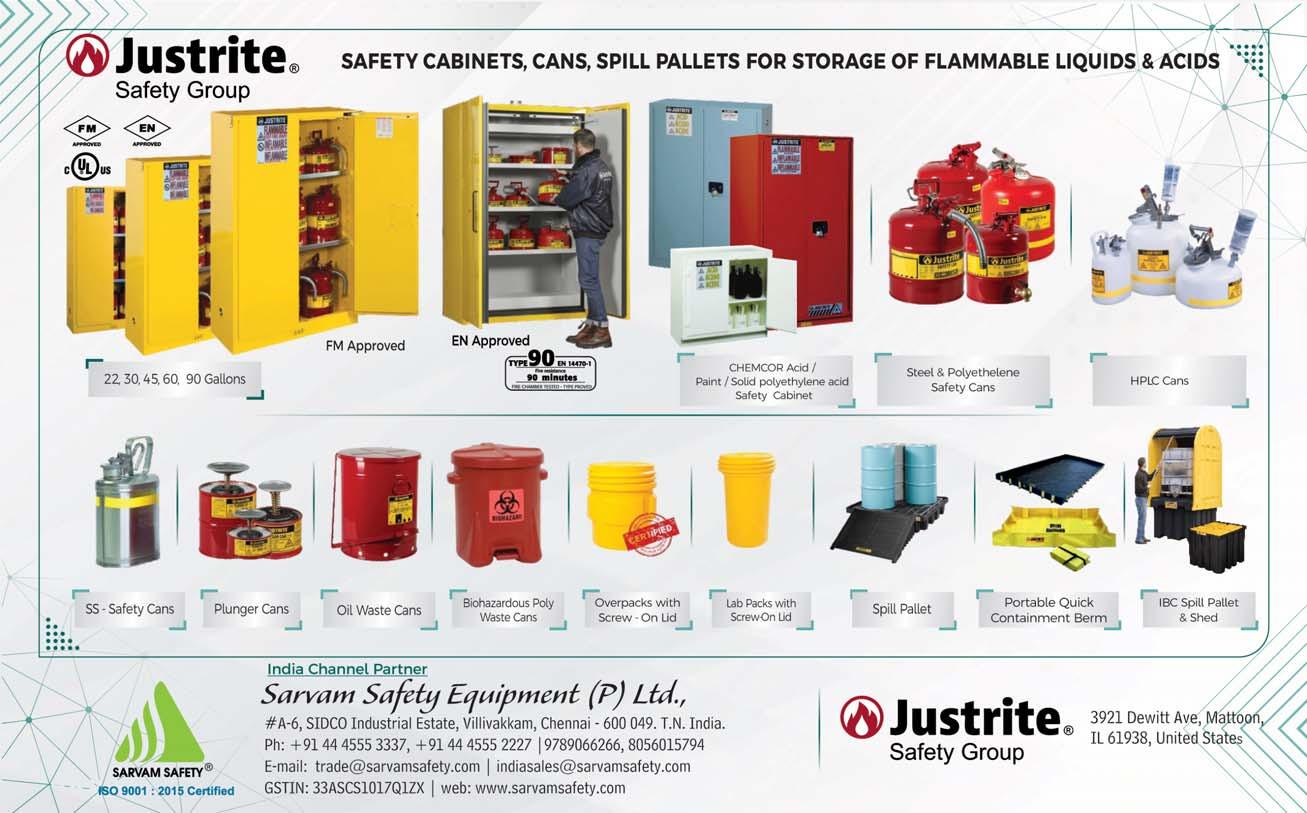

MeetsPharmacopeiaosmolalitytestingguidelines

3Leveluseraccessandpasswordprotection
Storage:unlimiteddatastorageforaccess
Audittrail:Preserveunlimitedresultsandevents
Databasebackup,protectsyourdatawithautomaticormanualbackup
No.127,BussaUdyogBhavan,TokershiJivrajRoad,SewriWest,Mumbai-400015, Maharashtra,Landline:+91022-24166630Mobile:+919833286615
® ® ®
BUSINESS AVENUES EXPRESS PHARMA February2023 EXPRESSPHARMA 44

BUSINESS AVENUES EXPRESS PHARMA EXPRESSPHARMA February2023 45


















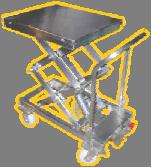








BUSINESS AVENUES EXPRESS PHARMA February2023 EXPRESSPHARMA 46

BUSINESS AVENUES EXPRESS PHARMA EXPRESSPHARMA February2023 47
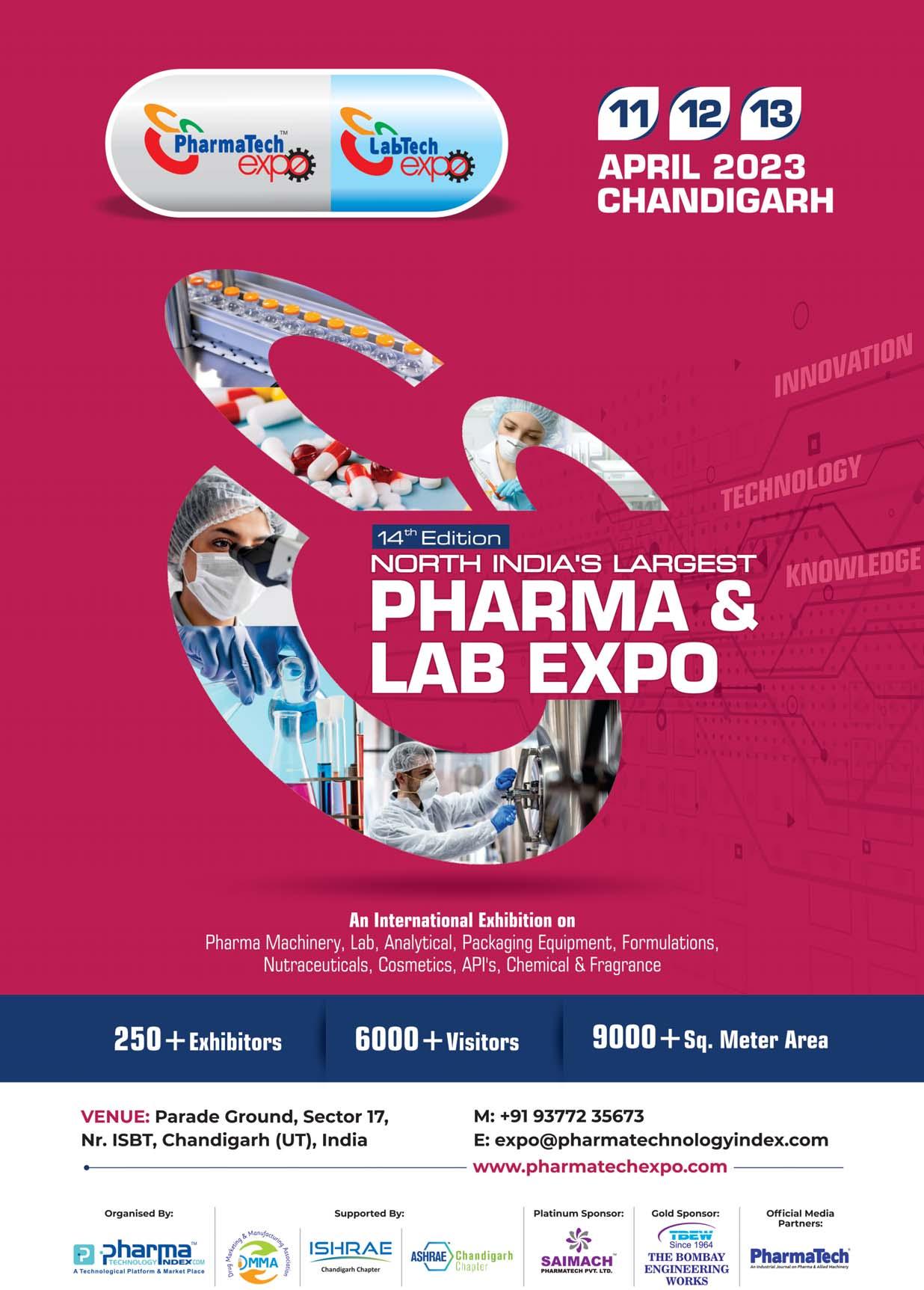
BUSINESS AVENUES EXPRESS PHARMA February2023 EXPRESSPHARMA 48
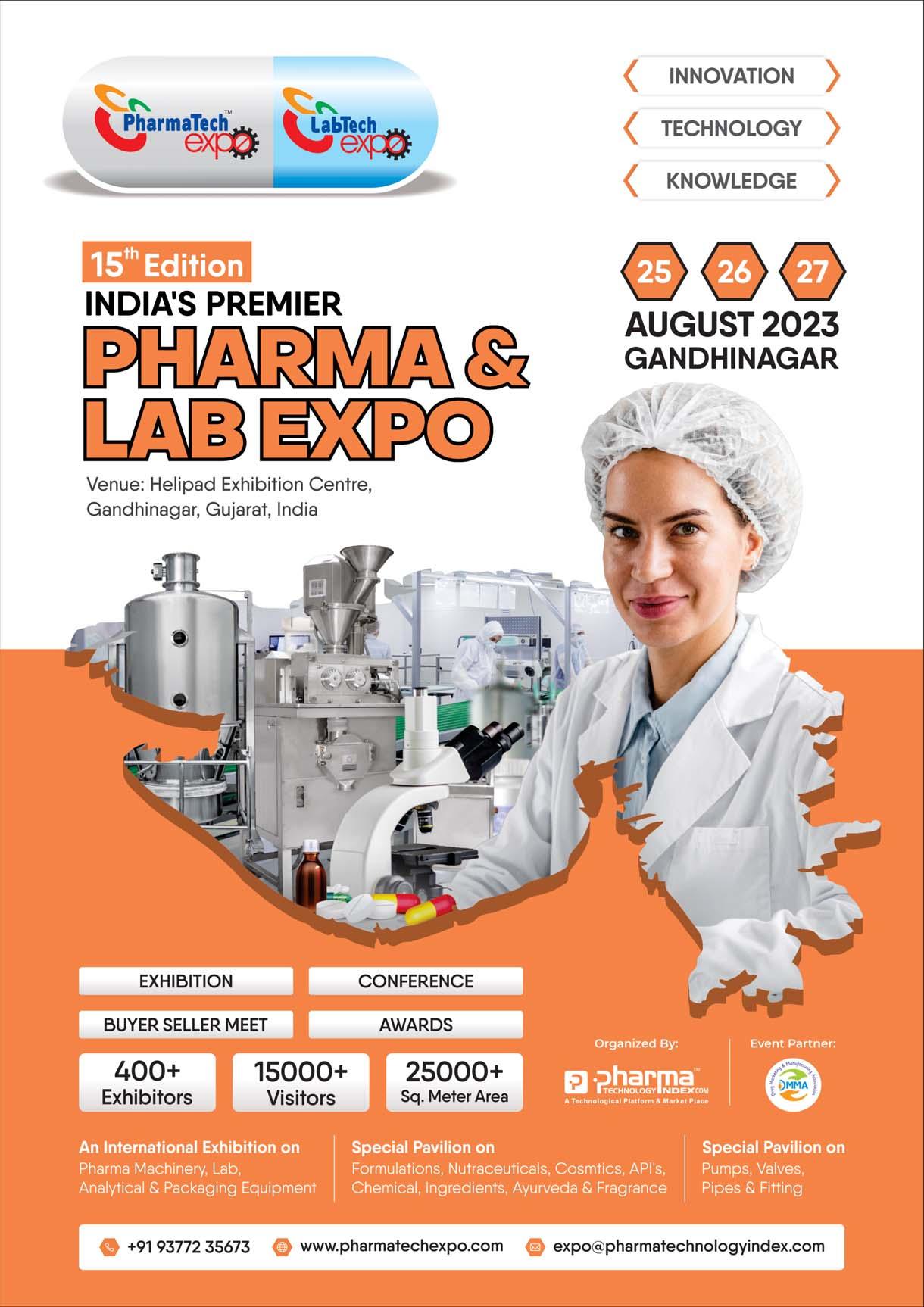
BUSINESS AVENUES EXPRESS PHARMA EXPRESSPHARMA February2023 49

BUSINESS AVENUES EXPRESS PHARMA February2023 EXPRESSPHARMA 50
PHARMA PULSE
Lipids for LNPformulations – Flash chromatographypurification options
To protect the mRNAand enable its effectiveness, pharma companies have worked with biotech companies to create more viable cell delivery options
COVID-19 caused accelerated research into developing vaccine options. Some of the created vaccines are based on mRNA, which, if not protected, easily degrade in humans before their therapeutic benefits can be realised.
To protect the mRNA and enable its effectiveness, pharma companies have worked with biotech companies to create more viable cell delivery options. The most widely used is lipid nanoparticle (LNP) encapsulation. This technology uses microfluidics to combine the vaccine, lipids, other excipients and adjuvants into small spherical particles called LNPs.

The lipid mixtures used typically contain one that is cationic, one that is PEG-based, a phospholipid, and one that is neutral, such as cholesterol. Due to the nature of these molecules, many purification techniques such as distillation or crystallisation are either extremely difficult or impractical to use; so, the industry has faced a new challenge at scale. Luckily, lipid molecules tend to be well suited to off-the-shelf purification methods and platforms, such as Biotage automated flash chromatography development systems (Biotage® Selekt) and scale up (Biotage® Flash 400) platforms for rapid scale up – by both normal-phase and reversed-phase methods.
Historically, detection by UV was hindered since these compounds have little UV absorbance. This problem required alternative detection techniques (evaporative lightscattering, (ELS)), or just collection by volume with post-purification analysis by TLC with staining or charring. Modern flash chromatography systems
now utilise photo-diode array UV detection, which can be focussed in the absorption range for the targetted molecules, thus, enhancing their detectability.
Reversed-phase flash chromatography separates compounds based on their hydrophobicity differences through a partitioning mechanism as seen with the lipid
chromatogram below where compound retention increases with the number of carbons in the molecule (Figure 1).

Normal-phase chromatography, on the other hand, separates
compounds based on polarity differences using an adsorptiondesorption mechanism. Lipophilic compounds elute quickly and those that are more polar elute later. For lipid purification, this can be beneficial as fatty acid type compounds will only be marginally retained, while cholesterol and other more polar compounds will be retained better, (Figure 2). These examples were performed a low scale (<100 mg) using small flash columns (10 gram), but the purification methods are easily scaled to 100s of grams to even kilogram-scale by using larger columns from Biotage up to 50 kg (Biotage® Flash 400L).
So, if you are involved in the world of lipid production and need to purify your lipids, consider your options. Depending on your goals, it is very likely either normal-phase or reversedphase flash chromatography will help you attain them.
Interested in learning more about fast-tracking purification? Learn more at www.biotage.com, contact: india@biotage.com

February2023 EXPRESS PHARMA 51
Figure 1.Reversed-phase flash chromatographypurification of methyl laurate,methyl oleate and cholesterol in 100 per cent methanol with UV(198-210 nm) and ELS detection.All lipids are easilydetected byboth UVand ELSD including the fullysaturated methyl laurate
Figure 2.Normal-phase flash chromatographic purification of methyl palmitate and cholesterol.The fullysaturated palmitate is too lipophilic to be retained while cholesterol,with a hydroxyl group,is well retained
The lipid mixtures used typically contain one that is cationic, one that is PEG-based,a phospholipid, and one that is neutral,such as cholesterol
More than just SCADA
PharmaEdge is an integrated,out-of-the-box,optimised offering from B&R for the pharma industry to meet the increasing demand of FDAcompliance.It helps to achieve cyber-security and advanced functionality of detailed reporting,analytics and business intelligence

The pharma industry is one of the world's most consistently growing industries. Pharma companies are bound by a multitude of regulations and standards. Implementing innovation in this fast-growing industry faces numerous challenges every day in terms of safety, traceability and data availability. Today's pharma companies face significant manufacturing challenges, including standards compliance and traceability to detect errors immediately. To meet these requirements, many pharma companies rely on a well-established approach: SCADA systems.
Today, a new generation of requirements have pharma companies looking for new solutions. Data acquisition is no longer enough, and factories are demanding faster and more accurate solutions with capabilities for energy monitoring, condition-based predictive maintenance, MES/ERP connectivity, reporting and advanced analytics. In today's fast-growing industry, large corporations are looking for a single-source solution and an integrated approach to leverage the existing capabilities and be ready for the future.
Data-driven SCADAsystem
Data is the new science. The world is now awash in data, which helps consumer needs be identified more accurately. Industries are looking for techniques and solutions to analyse the data easily, quickly and securely. To do this, they need a system that combines all the little data into one process. Futuristic manufacturing techniques are the hallmark of an excellent pharma facility. The pharma industry thrives on integrating such systems and techniques into its operations. SCADA represents one of the most significant advancements of the past and has helped shape today's manufacturing industry.
The pharma industry has re-
alised the importance of this system that allows them to analyse, implement and identify errors, if they find any. Pharma companies spend a large portion of their revenue on protecting their data. Despite the market being flooded with various SCADA systems, they are looking for a secure network system. B&R India, a leading manufacturer of industrial products and a reliable partner, has recognised the security gap in the pharma industry. That's why they have packaged important innovations for the pharma industry in a solution called PharmaEdge. This system supports FDA compliance and 21 CFR Part 11 and is aligned with the needs of Industry 4.0.
Solution built just for pharma
To meet the demands of the pharma industry, B&R has developed an integrated single-PC solution for monitoring and controlling the entire operational process that also meets the increasing requirements of FDA compliance, one of the fundamental benchmarks for pharma manufacturers. PharmaEdge of-

fers all the benefits of SCADA and a robust control system in one device. In short, it is a onestop solution with the ability to add energy monitoring, condition-based predictive maintenance, and MES/ERP connectivity. It also enables the implementation of smart machines for the future of the industry. The integrated PharmaEdge solution helps users optimise the performance of their automation systems while improving cost and energy efficiency. Instead of using separate control systems for process control, SCADA, energy monitoring and condition monitoring, users get all these functions in a single integrated system with built-in
cybersecurity. With this innovative one-box solution, users in factories can monitor and control their entire operation with a single system.
The unique PharmaEdge solution consists of a B&R industrial PC running a hypervisor solution with Linux and B&R's real-time operating system, providing easy access to machine and process automation libraries for easy configuration. There are no restrictions on internal tags and no incremental costs for additional tags. The PharmaEdge solution's built-in features support easy reporting and historical data retrieval. Several additional features such as access protection, protected
data archiving and retrieval, electronic signature, easy batch reporting, user-friendly audit trail and change management, to name a few, make this solution even more trustworthy. The PharmaEdge solution is OPCenabled with seamless connectivity to MES/ERP/EBMR and easy cloud connectivity via MQTT. It also has simplified dashboards for easy data analysis. It is compatible with standard browsers or mobile devices and consists of iOS and Android apps that provide access to dashboards and reports. This solution is user-friendly and easy to use, and is designed primarily for the challenges faced by pharma companies.

EXPRESS PHARMA February2023 52 PHARMA PULSE
Gandhi Automations’logistics solutions
The company offers complete logistics solutions by providing Dock Levelers,Dock Shelters, Sectional Overhead Doors and Dock Houses
Gandhi Automations’ – India's No.1 Entrance Automation and Loading Bay Equipment Company –widely recognised position has been achieved over years of hard work, innovation, commitment to quality and reliable customer service. The company is also proud to be certified to ISO 9001 : 2015, ISO 14001 : 2015 and ISO 45001 : 2018. Since its inception in 1996, the company has been manufacturing, importing, distributing and installing products that are problem-free and easyto-operate.
The company offers complete logistics solutions by providing Dock Levelers, Dock Shelters, Sectional Overhead Doors and Dock Houses.
Electro-hydraulic Dock Levelers offered by Gandhi Automations are not only “a bridge for connecting a vehicle,” but also facilitate fast, smooth and safe transition by compensating the difference in heights between the loading bay and the vehicle. This contributes to minimising energy used and savings on heating and chilling costs resulting in maintaining the quality of the transported goods. Dock Levelers offered by Gandhi Automations are designed as per EN 1398 standard for the most demanding loading and unloading operations.

Efficient loading and unloading the goods
The importance of efficient loading of goods has always been evident, and it has increased over the years, essentially for two reasons: the lesser availability and the higher cost of manpower. Consequently, lesser qualified manpower is being utilised which leads to damage to the goods.
The cost of loading and unloading the goods can be calculated precisely and is exactly definable, which allows for a scientific approach to find out the investment that goes into the process. Gandhi Automations
based on such scientific approach and feedback from clients. The Dock Levelers offered by the company ensure loading and unloading with lesser effort and minimal cost.
It is possible to load and unload products in a safe way, and, in the process, obtain remarkable energy savings. The Dock Leveler remains with the Loading Bay in the rest position and the Sectional Overhead Door closed, until the vehicle is positioned. The driver drives back centring to the Dock Shelter and stops the vehicle the moment it gets into contact with the bumpers.
The Sectional Overhead Door is then opened only when the vehicle is positioned, brakes are applied and engine is shut off. This eliminates the exit of
opposite in hot area and inside conditioned places) and intake of exhausting gases in the warehouse. After the Sectional Overhead Door opens, the lip of the Dock Leveler connects to the truck bed for loading unloading to take place.
At the end of the loading/unloading, the Dock Leveler is put in the rest position and the Sectional Overhead Door is closed, without moving the vehicle. The vehicle then departs at the end of the process. Following are the two types of Dock Levelers:

a) Radius Lip Dock Levelers
Radius Lip Dock Levelers are available in multiple sizes and capacities. It allows the dock to connect with the truck bed, thus, making it convenient to drive directly on and off with forklift trucks, etc. Further, the Self-
not retain dust and dirt which allows a smooth operation.
b) Telescopic Lip Dock Levelers
Telescopic Lip Dock Levelers are ideal for connecting vehicles unable to drive near dock i.e. sea containers, side loading railway wagons, etc. These Dock Levelers can be supplied with a lip extending up to one metre.
c) Edge-of-Dock Levelers
Edge-of-Dock Leveler is developed in compliance with the latest European safety standard, EN 1398. It has a capacity of 6,000 kg, and is suitable for use with all types of material-handling equipments.
d) Forklift Roll-Off Barrier Lip Dock Levelers
The newly-introduced product Forklift Roll-Off Barrier Lip Dock Leveler adds a run-off pro-
tal forklift roll-off when the Ovehead door is open and no trailer is stationed at the dock. These dock levelers are designed and built to provide all the benefits of the hydraulic dock leveler, along with the additional benefit of providing a formidable barrier.

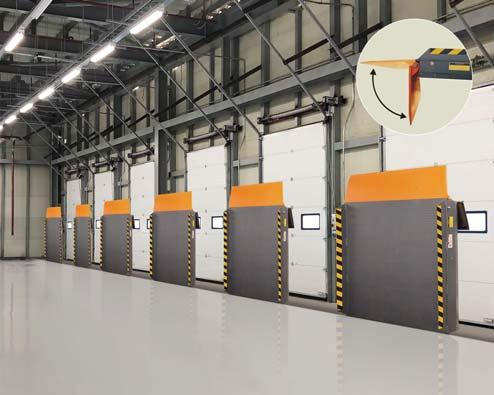
Gandhi Automations’ Dock Levelers are equipped with the most secure safety devices and accessories.
For further details, contact:
Gandhi Automations Pvt Ltd
Chawda Commercial Centre Link Road, Malad (W)
Mumbai – 400064, India
Off : +91 22 66720200 / 66720300
Fax: +91 22 66720201
Email: sales@geapl.co.in
Website: www.geapl.co.in
February2023 EXPRESS PHARMA 53 PHARMA PULSE
EXPLOTAB®: First in its class cost-effective superdisintegrant
Suyesh Kale,Technical Manager,JRS Pharma India,explains the mechanisms of tablet disintegration
The disintegration process is an integral step in ensuring, and indeed maximising, the bioavailability of the Active Pharma Ingredient (API) from the majority of solid dosage forms. Without disintegration, only the API near the surface of the tablet would be able to dissolve. Hence, the reproducible and full disintegration of the tablet upon exposure to the dissolution medium is of critical importance to achieve a reliable clinical performance of the dosage form. These complex porous systems undergo different mechanisms when they come in contact with physiological fluids. The performance of a drug is primarily influenced by the disintegration and dissolution behaviour of the powder compact. The most widely used disintegrants are synthetic polymers such as Crospovidone (PVPP), CrosCarmellose Sodium (CCS) and Sodium Starch Glycolate (SSG). 1
Mechanism of tablet disintegration
Disintegration refers to the mechanical break up of a compressed tablet into small granules upon ingestion and therefore, it is characterised by the breakdown of the interparticulate bonds, which were forged during the compaction of the tablet. Rapid disintegration is the key for drug bioavailability. Once the tablet is broken apart, the available surface area multiplies. The increase in the surface area allows the API to have more exposure to the disintegration media, thus promoting a more rapid release of the API and possibly more efficient therapy for the patient. There are three mechanisms of disintegration: swelling, wicking and shape recovery.2
EXPLOTAB®:3
Physical property:
1) EXPLOTAB® has good flow properties
2) EXPLOTAB® is allergenfree
Chemical property:
EXPLOTAB® is a crosslinked carboxymethylated potato starch

EXPLOTAB® operates through a swelling mechanism which is illustrated as below
disintegration force.3
Manufacturing process3 EXPLOTAB® is produced by crosslinking and carboxymethylation of potato starch, leading to a threedimensional cross-linked structure.3
Swelling type superdisintegrants like EXPLOTAB® are most effective with insoluble tablet matrices because the
power outperforms common starch-based disintegrants.
Benefits of using EXPLOTAB®3
1) Enhanced disintegration through controlled starch modification i.e. cross linking
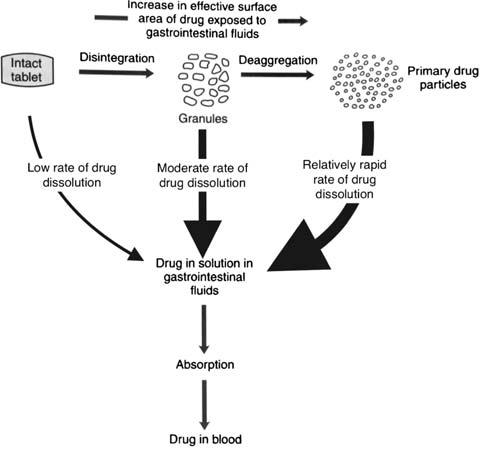
2) High purity of EXPLOTAB® (low NaCl) and low settling volume accelerate disintegration
3) High degree of brightness and reduced visible specs for quality finished dosage forms and whiter tablets
4) Specialty grades available
including low pH grades for improved API stability
5) EXPLOTAB® has low Ethanol content (use of specialised drying technology) which leads to better API stability
6) Its spherical particles lead to excellent powder flow and guarantee homogenous distribution after short blending time. The renowned disintegration power of EXPLOTAB® is unimpaired by hydrophobic lubricants and high compression forces, making it a universally applicable superdisintegrant.
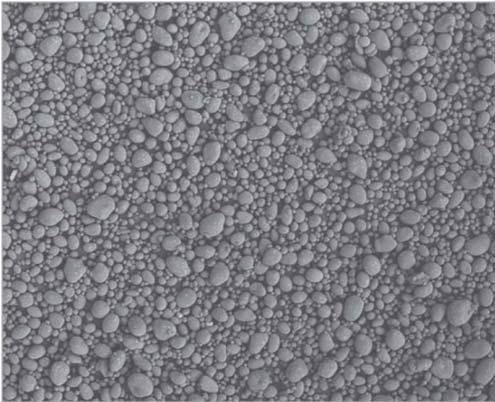
Swelling type superdisintegrants like EXPLOTAB® are most effective with insoluble tablet matrices because the swelling disintegrant particles require resistance in the tablet to develop their full
swelling disintegrant particles require resistance in the tablet to develop their full disintegration force.3
Due to its precisely balanced chemical crosslinking, its disintegration

EXPRESS PHARMA February2023 54 PHARMA PULSE
Fig.1 Mechanism of tablet disintegration and absorption 1
Fig.2 Swelling mechanism of EXPLOTAB®
Fig.3 SEM of EXPLOTAB®4
Fig.4 EXPLOTAB® particle size distribution3
PHARMA PULSE
EXPLOTAB® is Sodium starch glycolate manufactured using Ethanol as a solvent available in grades as below
Brand name Compendial type pH value
Main application
EXPLOTAB® A 5.5-7.5 Superdisintegrant with rapid and high degree of swelling for tablet and capsule formulations. Especiallyfor poor water soluble actives and tablet matrices with higher pH values.
EXPLOTAB® CLV A 5.5-7.5 Special grade with increased number of crosslinkings.Especially suited for wet granulation applications.
EXPLOTAB® lowPH B 3.0-5.0 Special grade with low pH value.
VIVASTAR® is Sodium starch glycolate manufactured using Methanol as a solvent available in grades as below Brand name
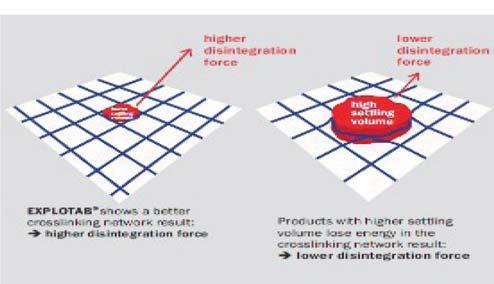
mulation ingredients and disrupting the tablet matrix. In capsules, the rapid and extreme swelling expels the contents to promote API release. 3
Importance of settling volume
A higher settling volume binds more disintegration energy. This leads to lower disintegration forces and longer disintegration times. EXPLOTAB® shows lower settling volume. Further, it shows better crosslinking leading to high disintegration force. 3

Formulation advice
1) EXPLOTAB® is normally used at a level of two-to-four per cent of the tableting mass. It is suitable for all tableting processes.
VIVASTAR® P A 5.5-7.5 Superdisintegrant with rapid and high degree of swelling for tablet and capsule formulations. Especiallyfor poor water-soluble actives. VIVASTAR® PSF A 5.5-7.5 Special grade with low methanol content. Especiallysuitable for alcohol and moisturesensitive actives.
Swelling of EXPLOTAB® EXPLOTAB® swells upon contact with media. It
absorbs water and expands significantly, thereby rapidly pushing against the other for-
2) In wet granulation formulations, EXPLOTAB® can be used both intra-granular, extra-granular or both. When used in intragranular, it absorbs some of the granulation fluid. The potential formation of lumps by the active or other ingredients is minimised. 3
P 1000 SF A 5.5-7.5 Low/medium/ high-viscositygrade superdisintegrants forming translucent gels in water.
VIVASTAR® P 3500 A 5.5-7.5
VIVASTAR® P 5000 A 5.5-7.5
References
1) Daniel.M, Zeitler.A, A Review of disintegration mechanism and techniques. Pharmaceutical Research 32 (2017) 890–891
2) Comprehensive analysis into disintegration mechanisms: How reliable are textbook recommendations? Emily Sabath JRS Pharma.
3) https://www.jrs.eu/pharmawAssets/docs/brochures/br-explotab-prospekt.pdf

4) https://www.jrspharma.com/ pharma_en/media-library/data /explotab.php
Author Suyesh Kale Technical Manager, JRS Pharma India

Email: Suyesh.kale@jrsindia.com
EXPRESS PHARMA 55
4) https://www.jrspharma.com/ pharma-wAssets/docs/ brochures/vivapur-mcg.pdf February2023
Fig.5 Disintegration mechanism of EXPLOTAB®3
Fig.6 Settling volume comparison
Fig.7 Importance of cross linking
Compendial type pH value Main application
VIVASTAR®
100 per cent performance in 50 per cent of space
The new X20 Embedded PLC family packs Intel Atom performance into a width of only 55 mm
B&R introduces a new PLC family: X20 Embedded. The PLCs combine high performance and numerous integrated interfaces in a housing only 55 mm wide. That makes them only half the width of the comparable devices.
With their powerful Intel Atom processors, the new PLCs are also suitable for demanding applications with short cycle times. The compact devices can even control a full-fledged robotics application. Machine builders save both costs and cabinet space.

They come standard with two USB ports, an integrated flash memory card and two Ethernet ports. An integrated switch supports daisy-chain cabling without any additional
network infrastructure.
Integrated interfaces
The devices feature hardware interfaces for POWERLINK and RS485. The RS485 interface can be used to connect a frequency inverter directly to the PLC without any additional hardware. The power supply is also integrated. Despite the high performance, the PLCs do not require any fans or batteries, making them fully maintenance-free.
Optional variants with an interface slot allow the PLCs to support additional field-bus protocols. All B&R interface cards can be combined with the X20 Embedded series, and all X20 I/O modules can be connected as usual.
Waters Corp announces awards and recognitions received from industryorganisations in 2022
Waters’instruments,informatics software and chemistry products recognised for innovation and quality by organisations,including Wiley Analytical Science and BioTech Breakthrough Awards
Waters Corporation announced awards and recognitions from multiple independent industry organisations throughout 2022, highlighting strength and momentum of the company’s product portfolio, its culture and leadership. Waters received more than 20 awards during the year that affirm the company’s position as a leading analytical tools and software provider committed to solving problems that matter.
“Waters has a rich history of helping to move science forward and being responsible to our people and to the planet. It’s fantastic to see our efforts being recognised. Our people are at the heart of the results we deliver, the innovations we create, and the way we do business with integrity. I am very proud of their dedication to help our
customers solve problems that matter, so that, together, we may leave the world better than we found it,” said Dr Udit Batra, President and CEO, Waters Corporation.
Selected highlights across product excellence, scientific leadership, advancements in Environmental, Social and Governance (ESG) business practices, and company leadership include:
Product innovation
BioTech Breakthrough Awards selected the waters_connect™ informatics software for Best Overall Analytics Platform of the Year. The judging panel recognised waters_connect for its thoughtfully designed analytical workflows that enable laboratories to improve efficiency and reproducibility, while reducing manual errors
for mass spectrometry data capture and analysis.
Wiley Analytical Science awarded first and second place respectively to the Waters Andrew+™ Pipetting Robot and Waters MaxPeak™ Premier Protein 250 Å SEC Analytical Columns, in the Wiley Analytical Science Awards Separation, Lab Automation and Lab Equipment category.
Corporate responsibility and culture
- Human Rights Campaign Corporate Equality Index 2022: Waters achieved a top score of 100 on the Human Rights Campaign Foundation’s annual scorecard for LGBTQ+ workplace equality.
- Dow Jones Sustainability Index (DJSI): For the second consecutive year, Waters was named to DJSI North America
based on its benchmark scores in the S&P Global Corporate Sustainability Assessment.
- Barron’s 100 Most Sustainable US Companies 2022: Waters ranked number six out of 100 companies – and the top lifesciences and healthcare company – based on performance in five key constituencies: shareholders, employees, customers, community and the planet.
Leadership
- PharmaVoice Red Jacket
List: Dr Udit Batra recognised for his “proven track record of setting audacious goals and devoting his career to accomplishing them.”
- Worcester Business Journal Business Leader of the Year : Dr Batra recognised as 2022 Large Business Leader of the Year.
- Outstanding’s List of Top 100 LGBT+ Executives – Waters Chief Information Officer Brook Colangelo, recognised for leading by example and driving change to create a more LGBT+ inclusive workplace.
Waters received additional awards from Forbes, Newsweek, SelectScience, LCGC, EUBusiness News, The Chromatographic Society, Global Health and Pharma Magazine, Academy of Science of Czech Republic and Eastern Analytical Symposium recognising a variety of Waters’ standout business achievements from customer service to instrumentation to employee contributions in the field of separation science.
Waters also achieved a yearover-year improvement in 2022 and the highest score to-date in its CDP Climate Change Disclosure score.
EXPRESS PHARMA February2023 56 PHARMA PULSE
Nasal spraydevelopment and characterisation
Intra-nasal administration is currently being explored to a great extent with many vaccines, peptides as well as hormonal formulations in the pipeline at different stages of clinical trials
The administration of drugs via the nasal route has been a preferred one for many years, and is widely popular for local, systemic, as well as delivery to the central nervous systems. Intra-nasal administration is currently being explored to a great extent with many vaccines, peptides as well as hormonal formulations in the pipeline at different stages of clinical trials.
Types of nasal sprays
Depending on the intended use of the finished product, physicochemical properties of the active and formulation characteristics, nasal sprays can be multi-dose, unit dose and bi-do se.
Multi-dose nasal sprays
These sprays have the lion’s share in the market. The drug formulation (solution or suspension) is filled in a bottle (glass or HDPE) that is closed with a nasal spray pump attached with a dip tube. An actuator is also present. The pumps are displacement type and can be crimp-on, screw-on and snapon.
Historically, metered-dose nasal sprays contain preservatives in their formulations. How-
ever, preservative-free pumps are slowly becoming a preferred choice to develop novel products.
Another configuration that has been marketed for many years (popular in the OTC segment) is the squeeze bottle.
Unit dose and bi-dose nasal sprays
Unit and bi-dose nasal sprays are designed to deliver precisely one or two doses of the medication upon actuations. They are ready-to-use products and are preferred for emergency and acute therapies. In both types of products, the formulation is filled in special micro-vials that are stoppered with rubber plunger (chlorobutyl or bromobutyl). This stoppered vial is integrated with the unit dose or bi-dose device (vial holder and actuator).
Nasal spraydevelopment
Nasal sprays are combination products where the formulation and device play a pivotal role in performance. Product delivery from the device governs the performance characteristics of the finished product. Therefore, it is essential to have a robust manufacturing process coupled with a
compatible device.
Nasal spray characterisation
In addition to general physicochemical tests such as pH, viscosity, osmolality, assay of active, preservative content, impurities and microbial limit tests, the performance characterisation of nasal sprays are of paramount significance. These tests give us insights about pump performance.
◆ Spray pattern and plume geometry: Characterisation of spray pattern and plume geometry are important for evaluating pump performance. Various factors can affect the spray pattern and plume geometry, including the size and shape of the nozzle, the design of the pump, the size of the metering chamber and the characteristics of the formulation.
◆ Droplet size distribution: This test can be performed using a laser diffraction method. Droplet size distribution can be controlled in terms of ranges for the D10, D50, D90, span [(D90 -D10)/D50], and percentage of droplets less than 10 mm.
◆ Pump delivery: This test is used to assess pump-to-pump reproducibility in terms of drug product performance and to
evaluate delivery from the pump.
◆ Single Actuation Content (SAC): SAC should be compared at the beginning, middle and end stages of the drug product lifecycle according to USP monograph or using apparatus B or another validated method. The drug product should be tested at a specified range of flow rates. The population bioequivalence (PBE) approach should be used for statistical evaluation, which assumes a log normal distribution.
◆ Drug in small particles/ droplets: Sizing of droplets or particles by multi-stage Cascade Impactor (CI) measures aerodynamic diameter based on inertial impaction; an important factor in deposition of the drug in the nasal passages. Analytical data should be based on a validated chemical assay.
The nasal route offers numerous advantages for local, systemic as well as nose-tobrain drug delivery. Considering the current regulatory landscape and complex manufacturing technologies, the successful development of a nasal spray product would require expertise of a robust manufacturing process and optimal de-
Thermo Fisher launches Big Foot cell sorter in
vice performance.
About Rubicon Research’s capabilities
We have a 15,000 square feet development and testing facility specializing in pulmonary and nasal drug delivery systems in Concord, Canada. It is a US FDA inspected and Health Canada approved laboratory and facility. Our manufacturing facility includes fully automated filling lines for unit dose and multidose nasal sprays.
From development to commercial
Our capabilities cover both development and commercial scale manufacture of unit dose, bidose, and multi-dose nasal sprays in environmentally controlled production facilities. With an excellent history of regulatory approvals, we can onboard projects at any stage of their lifecycle—from initial concept, through formulation and analytical method development/ optimization, clinical manufacturing, and commercial manufacturing.
To know more visit www.rubicon.co.in or contact bd@rubicon.co.in
India
First-of-its-kind cell-sorting technology supports researchers advancing new therapies
Thermo Fisher Scientific, the world leader in serving science, recently announced the launch of the Bigfoot Spectral Cell Sorter in India. The first-of-its-kind cell-sorting technology provides easy-to-use, high-speed cell sorting by complimenting conventional with spectral sorting and analysis.
Cell sorting enables scientists to isolate live, homogenous cell populations to answer critical questions regarding cellular changes that take place under certain conditions, stem cell
differentiation and cellular response to drugs. These insights are useful in genome editing, vaccine studies, drug and toxicity screening, and cell and gene therapy development, among other applications.
The Bigfoot Spectral Cell Sorter was designed to address challenges faced by researchers, offering unique benefits including:
◆ Speed at scale: The instrument accelerates sorting up to
10 times faster than competitors.
◆ Versatility of detection: Bigfoot Spectral Cell Sorter can be configured with up to nine lasers

and 60 detectors, providing adaptability for both standard fluorescence detection and spectral unmixing.
◆ Personnel and product protection: A custom-designed, built-in safety enclosure and an Aerosol Management System (AMS) provide safety and protection in a compact footprint.
“Growing interest in areas of immuno-oncology, purification of engineered microbes and vaccine development has increased demand for cytometry
analysis and sorting techniques with greater multiplexing capabilities. The Bigfoot Spectral Cell Sorter addresses researchers’ need to gain deeper biological insights and advance their work in the development of new therapies,” said Amit Chopra, Managing Director, India and South Asia, Thermo Fisher Scientific.
Thermo Fisher acquired cellsorting technology assets from Propel Labs, a wholly-owned subsidiary of SIDIS Corp, in 2021.
February2023 EXPRESS PHARMA 57 PHARMA PULSE
Complete environmental monitoring solution – testo Saveris Pharma
It monitors and documents temperature,humidity,differential pressure and other parameters without interruption and compliantly with GxPso that audits and inspections are conducted smoothly
There are several critical applications in the industry like research and development that demand for continuous and reliable monitoring of important environmental parameters. From medical, bio-technical, chemical and pharma laboratories to cleanrooms, biobanks up to blood and tissue banks, a holistic monitoring system is necessary, which reliably records different measurement parameters in these rooms, and, at equipment. Wherever there is a need to adhere to necessary standards, ensure traceability and audit compliance, especially pharma, these solutions become crucial in the facility operation.
The most efficient way to address this requirement is the implementation of fully automated environmental monitoring system testo Saveris Pharma. It monitors and documents temperature, humidity, differential pressure and other parameters without interruption and compliantly with GxP so that audits and inspections are conducted smoothly. As a complete solution, testo Saveris Pharma combines
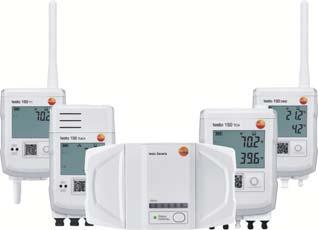
◆ high-precision measurements with secured data communication
◆ intuitive and pro-validation software
◆ comprehensive services.
The system consists of the following components
Data logger and communication modules
Data loggers are the components that measure/log the data continuously at different locations in the facility. They communicate with the base unit to transfer the recorded data. Because there are numerous tasks to fulfil in research and development, there are various models
of data logger to measure different parameters.
Another important task is data transfer, and, for that, communication modules are used. Each data logger can be flexibly connected to one of the three communication modules.
◆ WLAN Module
◆ LAN Module
◆ Radio via Testo Ultra range communication Module testo UltraRange ensures that a strong and robust radio signal is available even over long distances or in closed rooms. All data loggers can be exactly calibrated, and depending on the model, can record temperature and relative air humidity. As per the applications, data loggers are selected for environment monitoring for warehouse, analytical/microbiology lab, animal house or equipment monitoring like refrigerator, freezer, chiller, walk in chamber, etc.
The base station
The base is literally the heart of testo Saveris Pharma system. It can connect with 1,000 different data loggers at a time. It collects measurement values and analyses its limit value violation or any other critical event that occurs. It plays an important role in prompt alarm management. The base unit can be positioned centrally at a given facility location or office. Base station delivers alarms to users via an alarm relay and an LTE
stick that enables alarms by SMS as well, in addition to visual and audible alarms.
Digital and analog sensors
The instrumentation utilised to measure parameters like temperature and humidity is in the form of variety of digital and analog sensors that are easy to handle and install. The digital sensors have advantage over analog sensors as it can be quickly exchanged during continuing operation for calibration or defect correction. Calibration of digital sensor is independent of its logger. Thus, it ensures no gap in the measurement values or documentation. The measuring ranges of the temperature probes extend from -200°C to +1300°C, covering almost any possible scenario in the field of research and development.
The integration of other measurement parameters such as differential pressure, particles, etc. also work smoothly with the analog coupler as a standardised interface.
System software
Once the data is recorded by loggers and analysed by the base station, the testo Saveris Pharma software comes into play where all readings are collated, stored, visualised and backed up seamlessly. Automatic reports are generated and sent over email to concerned users. Some important features are applied like electronic signature, electronic record, access control, audit trail and alarm logs. There are two versions of the testo Saveris software;
◆ testo Saveris PRO software: It is suitable for the automated and uninterrupted data monitoring with less stringent regulations, normally other than pharma industry.
◆ testo Saveris CFR software:
It guarantees unconditional adherence to US 21 CFR Part 11 as well as Annex 11 of the EU guidelines for GMP. In addition to the range of function of the PRO version, it offers audit trail and electronic signatures.
In addition, we provide web
access to the data with testo Saveris Pharma Cockpit - a web-based and intuitive user interface which allows data access from different end devices. Alarms can be identified and acknowledged via a smartphone, tablet or PC at any time. It also supports features like digital signature post any action as well as a mandatory comment on the event.
Comprehensive services
The most important aspect of any solution is after sales service. This is one of the strongest values offered by Testo to its customers. Testo extends its support from site survey, installation commissioning, IQOQ documentation to annual maintenance work and recalibration. So, all the end-to-end services are offered under one roof as an OEM by Testo. Thus, users do not have to run pillar-to-post to get support. Testo ensures rich user’s experience throughout lifecycle of the system.
Areas of application
◆ Area monitoring in labs, production, warehouse and animal house in pharma
◆ Equipment monitoring for QA/QC, microbiology in pharma
◆ Clean room area monitoring in pharma


◆ Refrigeration and deepfreezer applications in pharma
◆ Uninterrupted cold chain monitoring and controlled freezing in blood and bio banks
◆ Applicable for lab equipment from laboratory extractor to water bath
◆ Data centre area monitoring
◆ Calibration and testing lab area monitoring
For more details, login to www.testo.com or write back to info@testo.in
EXPRESS PHARMA February2023 58 PHARMA PULSE


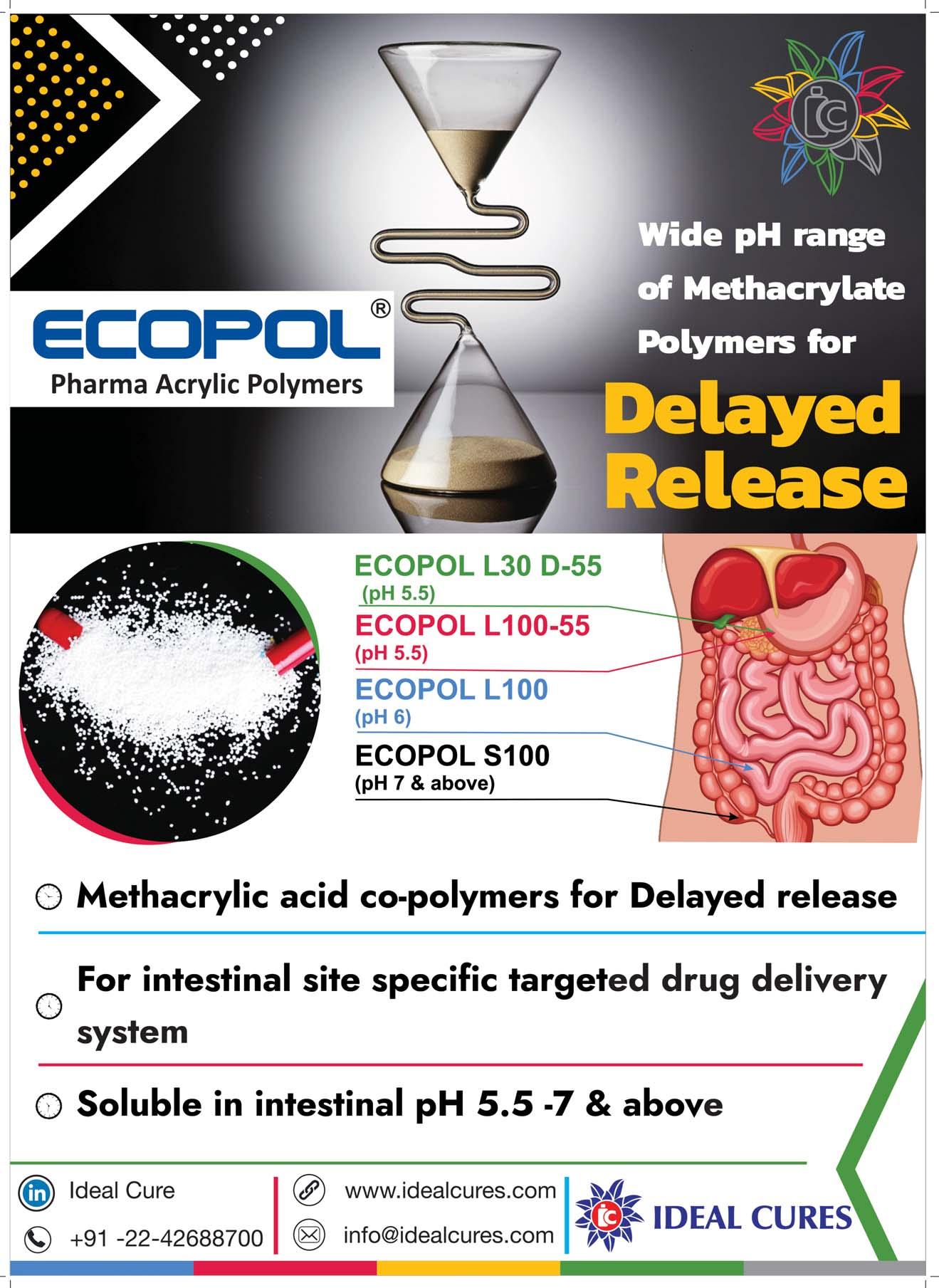
REGD.WITH RNI NO.MAHENG/2005/21398,POSTAL REGD.NO.MCS/164/2022 – 24,PUBLISHED ON 5TH EVERY MONTH, POSTED ON 9TH,10TH,AND 11TH EVERY MONTH POSTED AT MUMBAI PATRIKA CHANNEL SORTING OFFICE,MUMBAI – 400001















































 By EPNews Bureau
By EPNews Bureau














































































































































































